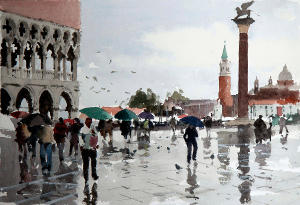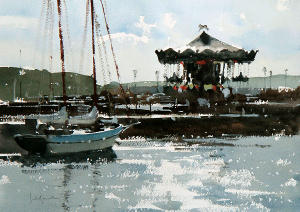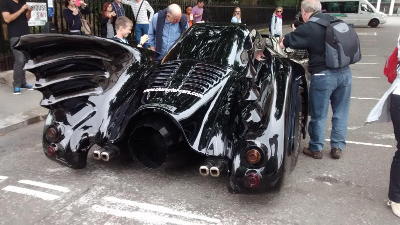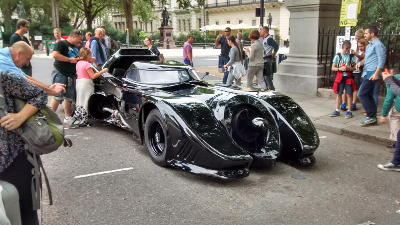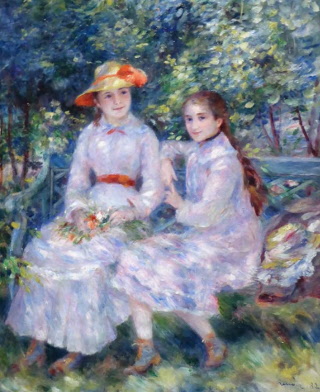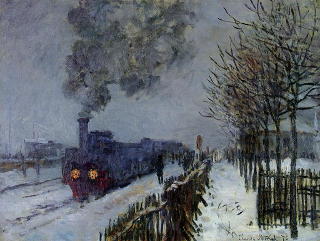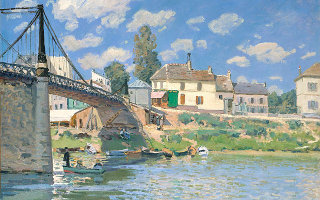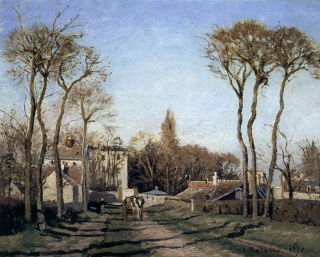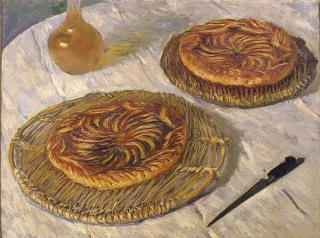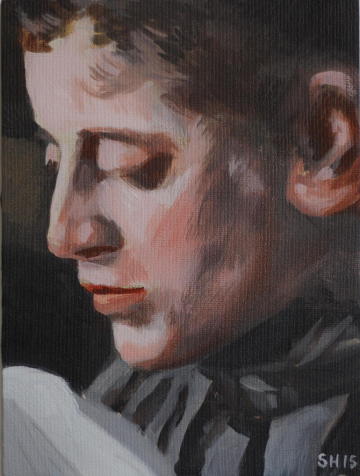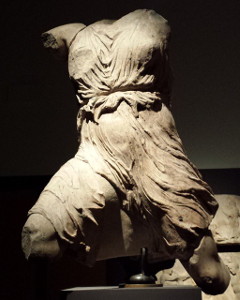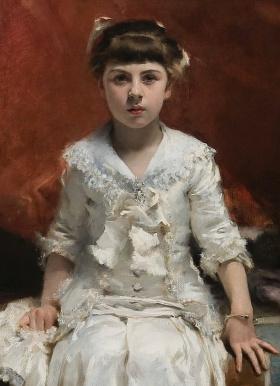The new V&A gallery Europe 1600-1815 is devoted to the growing magnificence of European artistic taste through the Baroque and to the Romantic period.
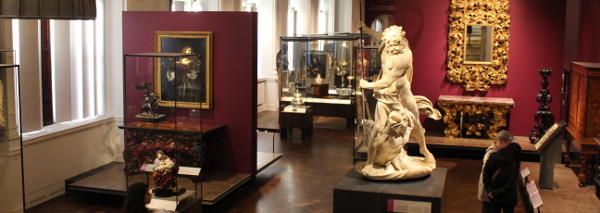
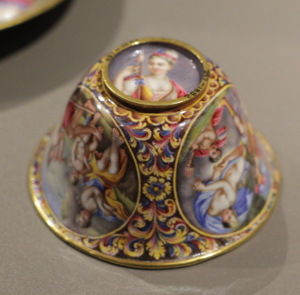
Above: Cup, Copper painted in enamels
with gold mounts, Switzerland, 1700-1720
As you can imagine, there's a lot of splendour and style on display. The new gallery has been a while in the making but it shows off the beauty and craftmanship of the age (in a way, similar to the British Museum's Waddesdon Bequest). We have furniture, fashion, sculpture, ceramics and even a whole room on display. The royals and the rich spared very little expense.
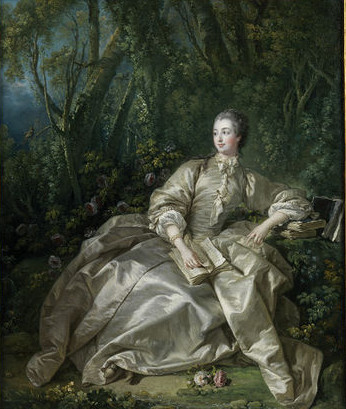
Some of the things on display are so finely created and so astonishing that they need to be seen to be believed.
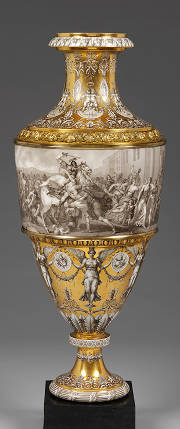
Right: Vase with the Abduction of the Sabines, made at
Dihl and Guérhard's porcelain factory,
about 1790-95, France
In his television series Civilisation, Kenneth Clarke considered these years as a peak of high civilisation, and it is hard to disagree. If you like gold, silver, fine art and beautiful display, the V&A is for you, and this gallery in particular.
You can watch (what appears to be all of) Civilisation on YouTube.
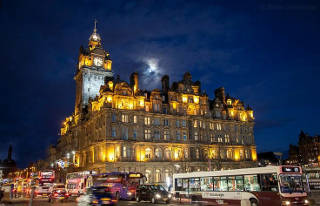
Above: What was the North British Hotel, Edinburgh.
"The Old North"
In Edinburgh a few months ago, I referred to the big hotel at the east end of Princes Street as the North British. I was corrected: it's The Balmoral now (well, I've been away a while).
Balmoral is a Gaelic word meaning "majestic dwelling", and I think that would certainly apply to this impressive hotel. Of course, the name "Balmoral" has royal connotations today as well. Gaelic itself is appearing on all sorts of signs in Scotland now, even though most Scots have no idea how to pronounce much of it. However, the original language of North Britain (this is all well before the country "Scotland") was not Gaelic but Brittonic (or Brythonic) a "celtic" language shared with the inhabitants of the rest of the island of Britain; a language that would become Old Welsh.
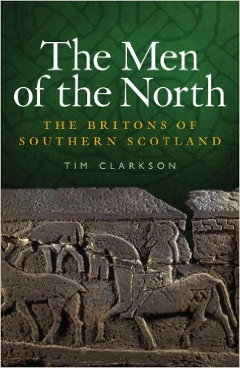
I recently read Tim Clarkson's book Men of the North. Clarkson tries to shed as much light as possible on the various North British Kingdoms that sprang up after the Roman's retreat from the island. This is a very hard period of time to unravel but he does a good job with the extremely unreliable and fragmentary evidence available.
Most of this evidence is much later than the time it purports to describe. It can also be as much about the time it was written as the time it covers. Thank goodness for Bede, a Northumbrian who wrote the best and closest account we have of this early period.
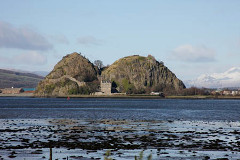
Above: Dumbarton Rock.
One of the longest surviving British Kingdoms in the north was Alt Clut, based at the mouth of the Clyde and Dumbarton Rock. It was only in 870 that the rock was abandoned when it was attacked and sacked by the Vikings. The center of power was moved to Govan. In the 11th Century, the Kingdom of Strathclyde was absorbed by the growing power of the Scots :
Around 1050, the kingdom of Strathclyde was conquered by the increasingly powerful Scots. King David I founded a new diocese in Glasgow in 1114, and the old church at Govan was gradually abandoned. As for the Britons themselves: "They were no longer Cumbri but had become 'Scots' like their new political masters. Inevitably, as time wore on, the deeds of their forefathers began to fade from memory. Soon only the sculptured stones remained, a handful of monuments scattered across the land, to bear mute witness to a forgotten people." (Tim Clarkson)
The above quote is from The Govan Stones, a blog post from Jo Woolf describing a visit to Govan Old Parish Church. The church contains a surprising number of very ancient standing stones and sculptures from this early period. Tim Clarkson linked to this from his own website devoted to the Britons of Strathclyde, Early Medieval Govan.
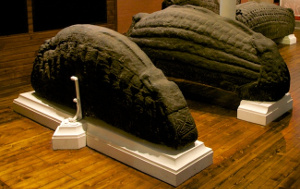
Above: the enigmatic "hogback" stones.
Who would have thought things like these were hidden away here? Some of the oddest artifacts are the "hogback" stones - are they norse? No one really knows what they were made for, or what they represent. But as Jo Woolf says :
Built to withstand the wrath of giants, they look as if their whole purpose is to keep something in! You get a sense of someone being locked within the earth, safe from all kinds of unspeakable evil.
A good reason to visit Govan; something I never thought I'd want to do.

Sir Peter Lely, Catherine of Braganza, 1665
In the early 1660's, King Charles II married Catherine of Braganza, daughter of the Portugese King. This is an episode covered in Peter Ackroyd's latest book in his History of England series, Civil War, a book I have almost finished. It's a good and straightforward read as usual.
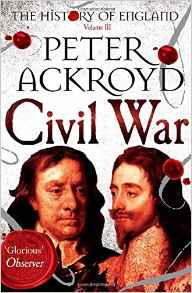
As Ackroyd notes of the occasion, Charles and Catherine met in Portsmouth for the first time and it sounds like a delicate moment :
One of Catherine's first requests was for a cup of tea, then a novelty. Instead she was offered a glass of ale.
She was going to have to put up with a lot worse. Charles was a complete philanderer as Ackroyd further notes :
Pepys calculated that he had at least seventeen mistresses even before the restoration.
Such was the current nature of the aristocratic estate.
Blair Worden in The Spectator review of Ackroyd's Civil War book is less than impressed. He thinks it is all a bit predictable, with little or nothing new to say, and less analysis. Fair enough. It does tell the same stories many might know from previous histories, but Ackroyd can still engage. Fundamentally, the stories might not be fresh, and there might be little "analysis", but this is not the goal of his history here. Good stories bear re-telling.
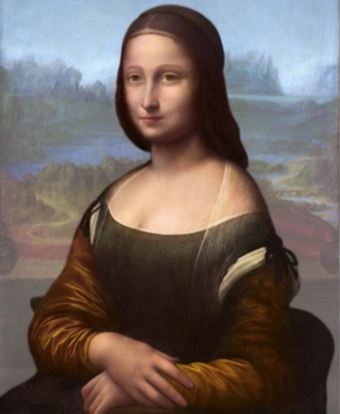
The BBC have made an excellent television program with Andrew Graham-Dixon about the mystery of Leonardo's most famous painting, the Mona Lisa, known in France as La Gioconda.
In the Secrets of the Mona Lisa, Graham-Dixon travels to Florence, Singapore, Oxford and Paris to investigate the existence of a second portrait, one that more closely matches early eyewitness accounts (including a drawing Raphael made).
Right: Reconstruction of the painting Cotte finds underneath the Mona Lisa.
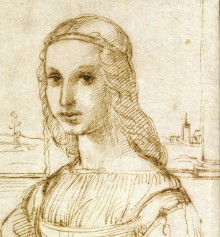
The discoveries made by French scientist Pascal Cotte using a scientific technique he invented called Layer Amplification Method are intriguing. A hidden painting underneath the painting we know. Is this the real Lisa Gherardini?
Left: Raphael's drawing of the original Mona Lisa? ('Young Woman on a Balcony’).
Jonathan Jones in the Guardian is sceptical :
Cotte has forgotten that Leonardo was a genius. Of course he did not do anything so banal as paint someone else on top of his portrait of a Florentine woman. What he did was so much more fascinating. He worked on this portrait until the face of a real person was transformed into a myth.
Well, who knows? But all are agreed: this is fascinating stuff. A great television programm with Andrew Graham-Dixon superb as our guide and interpreter. Highly recommended.
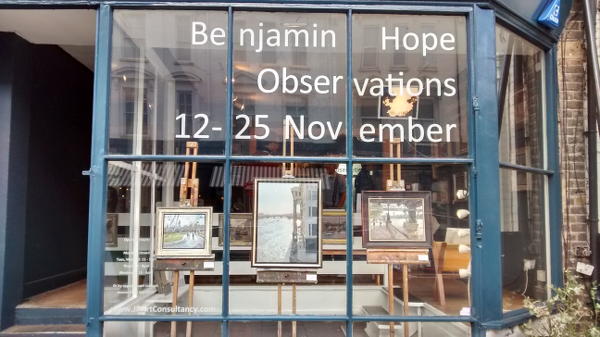
I noticed a new art gallery on Saturday down on Battersea Rise (Clapham Junction), called the JP Art Gallery. A new artist called Benjamin Hope has his debut solo show here and I popped in to have a look.
Hope mainly works in oil and paints en plein air usually (meaning "outside" basically). Many of his paintings are in and around central London, including parts I know well, like Clapham and Westminster. He was at the gallery and we spoke briefly about his work and technique; I'm always interested in how an artist works.
I really like his paintings, which are generally muted and impressionistic. He captures a weak winter sunlight very well and doesn't fill the frame with to much detail or fuss.
Some of the work I liked most at the gallery does not seem to be displayed on his website, but this selection is fairly representative and pretty good. Coincidentally, I remembered seeing (and liking) the first one (Blackheath) at the Mall Galleries a few months ago.
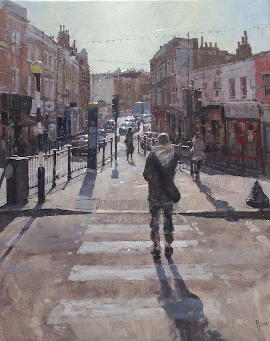
Almost Spring-like, Blackheath
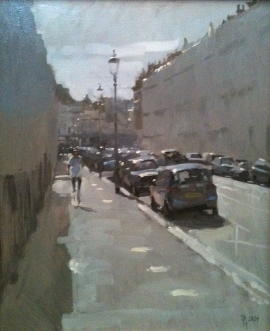
Looking West Along Queen's Gate Terrace
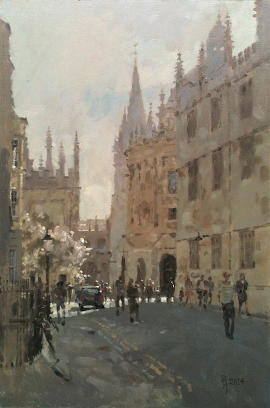
Hertford College Blossom
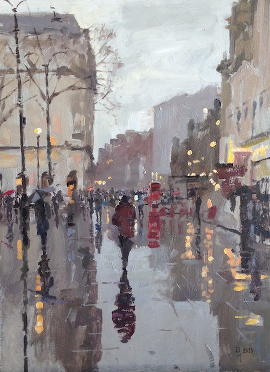
St Martin’s Place, Rain at Dusk
I visited the National Gallery's Goya, The Portraits again on Saturday. On my first visit, I was surprised not to see one of the gallery's own Goya portraits on show, Portrait of Doña Isabel de Porcel :
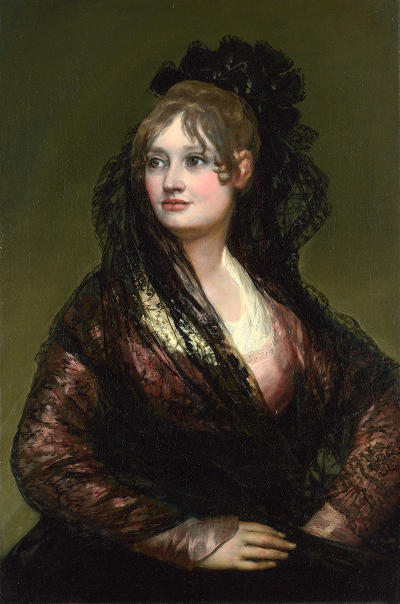
Francisco de Goya, Doña Isabel de Porcel,Oil on canvas, before 1805
This is a great painting, and one of my favourite paintings from the whole gallery.
However, according to a page on the gallery website, some scholars are casting some doubt as to whether it is an authentic Goya :
Although painted with tremendous flair, the picture’s brushwork – when compared with his other portraits – lacks Goya’s customary subtlety in describing transparencies and textures. The sitter, Isabel de Porcel, is extremely charismatic but we struggle to grasp her psychological state; something in which Goya’s portraits invariably excelled.
Maybe it isn't, but the painting remains accomplished and beautiful. There are a few portraits in the exhibition that I would say are mediocre, and some extremely good. This painting would be among the best.
It is also worth mentioning that art historians have a slightly sketchy record with authentication. See Eric Hebborn for example.
Down to Llewellyn Alexander again, unfortunately not missing the rain this morning! I mentioned that I was surprised he did so many watercolours (having thought he was mainly an oil painter), but discovered I was thinking of his son, Bruce Yardley.
John Yardley is a well known watercolour painter and the Llewellyn Alexander gallery has a good selection of his work in their new exhibition.
From (what appear to be) very simple applications of blobs of colour, a few shapes and lines, he conjures up amazing pictures that perfectly capture a moment. A very impressionistic watercolour style, and very impressive results.
Less is sometimes more. Take a look at the rest of the pictures on the website, or better still, pop in and have a look in person.

I went to see the film of the book, and thought it was excellent (as expected). Like the book, it was funny, intelligent and gave a good (if not always completely accurate) scientific background to the adventure. It left a few things out, but it was clear that they were dropped to keep things going, and didn't harm the story in any way. The film was also very moving; emotion is where it surpassed the book.
A positive, exciting and ultimately uplifting story. At some point, we have to get off this planet, so I say: let's go to Mars!.
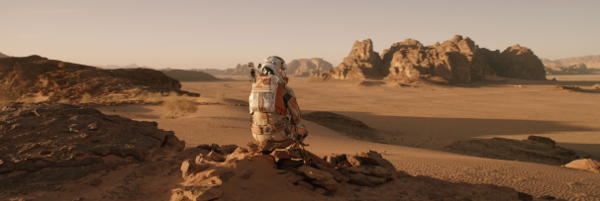
This is a question John Kay asks in his recent Google Talk, answering with four things he thinks it should be for e.g.
- Payment system
- Wealth management
- Risk mitigation
- Capital allocation
An ironic point he makes is that the current structure and incentives in the financial system is such that far from mitigating risk, it massively increases it. A depressing thought is that it will take the next crisis for us to move to properly fix the system.
This 40-odd minute talk is worth your time :
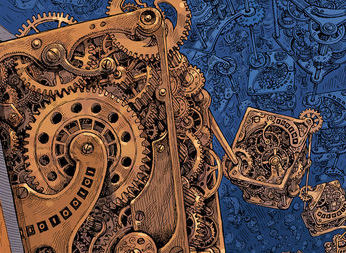
There was a BBC radio program a few weeks ago on the Blockchain called FutureProofing. The blockchain is a clever bit of applied encryption that let's people keep an accurate "ledger" of different types of transactions, a ledger that is open, distributed and easy to verify as being true. Its most famous application just now, and the reason it was invented, is its use by bitcoin, the electronic currency.
The Economist magazine has a better explanation of the blockchain and why it's so interesting :
The great chain of being sure about things
All sorts of companies and public bodies suffer from hard-to-maintain and often incompatible databases and the high transaction costs of getting them to talk to each other. This is the problem Ethereum, arguably the most ambitious distributed-ledger project, wants to solve. The brainchild of Vitalik Buterin, a 21-year-old Canadian programming prodigy, Ethereum’s distributed ledger can deal with more data than bitcoin’s can. And it comes with a programming language that allows users to write more sophisticated smart contracts, thus creating invoices that pay themselves when a shipment arrives or share certificates which automatically send their owners dividends if profits reach a certain level. Such cleverness, Mr Buterin hopes, will allow the formation of “decentralised autonomous organisations”—virtual companies that are basically just sets of rules running on Ethereum’s blockchain.
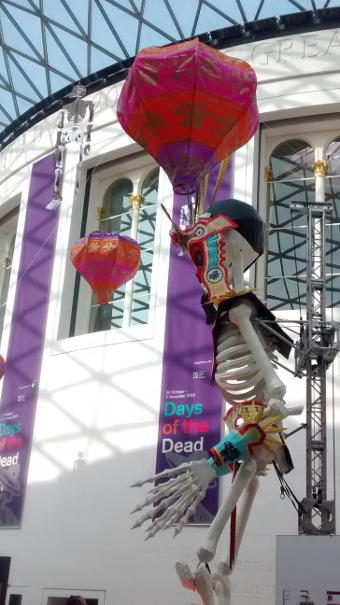
I was at the British Museum today, a very special day for The Celts in fact, this evening being Samhain, the end of the Celtic summer. Edinburgh will be hosting a Fire Festival.
The ancient rituals have metamorphosed over the years into the Christian All Hallows Eve, now better known as Halloween. The museum was celebrating this through its Day of the Dead incarnation, with music and giant puppets. Quite impressive actually.
Just passing through, my destination was another visit to The Celts, which I plan on writing a bit about, having also just about finished a good book on their history. A good chance to look at the beautiful Great Torc :

I wrote about this object a while ago.

The Great Court was, perhaps, a little bright and sunny for giant walking skeletons!
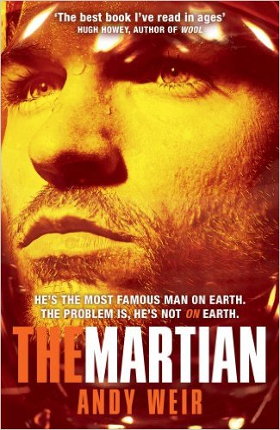
The Martian
by Andy Weir
Mark Watney's the best botanist on the planet. Also the best engineer, programmer, geologist, astronomer and pretty much everything. Unfortunately, he's the only person on the planet ...
With the film publicity in sight, I bought the book on the spur of the moment and thought I'd read it before a visit to the cinema. I'm glad I did because the book's excellent: exciting and also very funny. In fact, it's laugh-out-loud funny on occasion as the marooned astronaut Mark Watney tries to figure out how to get back home.
Watney's not only very resourceful but a bit of a comedian, and early on in the book I was a little unsure about its humour and lightheartedness, not normally my cup of tea. But I persevered and am so glad I did. This is a wonderful adventure story, with great characters as well as believable science. If the math and science is not a strong point for you, let it wash over you, and it never distracts from the story.
Now I want to see the film, which I hear is good as well. Maybe this sort of book/film combination is an antidote to some of the more mindless stupidity around nowadays at the cinema.
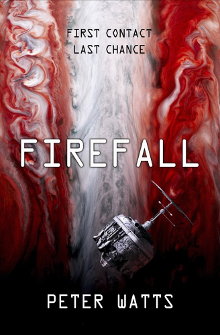
Echopraxia
By Peter Watts
I read Peter Watts' Blindsight a few months ago (a free e-book download from his website) and recently bought and read his sequel Echopraxia. I re-read Blindsight as a refresher before starting the followup. The book Firefall contains both stories.
Blindsight is one of those books that's good to read on an e-reader because you can easily look up words you don't understand. This is a very useful feature I miss when I read dead-tree books now, and a well used feature for both Blindsight and Echopraxia. I have a science background and enjoy the extrapolation of books like these, but Echopraxia was a bit mystifying to me on some occasions.
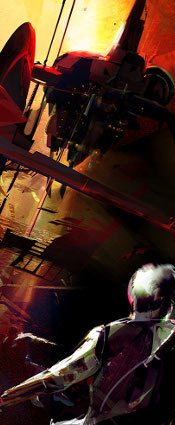
Blindsight is a novel about first contact, and the odd crew of people sent to find out what might be lurking in the Oort cloud. So, aliens and spaceships. But this is far from a normal "alien" and "spaceship" novel, and the book is as much about us (humans) as them (the aliens). We can be quite "alien" ourselves and getting stranger all the time. Well written, good (if sometimes odd) characters and interesting discussion of evolution and consciousness: particularly about whether consciousness is actually required to function (and exhibit intelligence) and what advantages it may (or may not) have. This is not the sort of thing that comes up often. Neither do spare-faring vampires, a species brought back to life my modern homo-sapiens because they're much better than baseline people like us at a lot of things. The captain of the team on the spaceship Theseus in Blindsight is a vampire.
Echopraxia is the sequel and takes place on the Earth Blindsight's crew have left. An Earth in the late 21st Century and starting to fall apart. There are many very interesting ideas here but the big problem for me was that I just couldn't understand some of it, especially towards the end. I think I understand it a bit better now but I cheated and read Watts' "explanation" on his web site.
Maybe I need to read it again, but that's going to have to wait a while. Watts gets an A+ for a thought-provoking and interesting near-future adventure though.
Peter Watts has an interesting web site where you can read a lot of background to his stories. He's a writer that does a lot of research and includes and discusses it in the book's appendices. These are definitely worth a look, and I found them a fascinating overview of where some of the current scientific thinking is.

I joined the British Museum, which gives me free access to their shows, members' lounge and a few other things. My second visit as a member was to the exhibition Drawing in silver and gold, a look at the metalpoint drawing style (my first was to the new Celts show but more on that later).
On the north side, up the stairs, this is in the museum's print and drawing display space, a lovely big room, well set up to show off works by Leonardo, Raphael, Dürer and other masters.
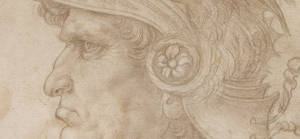
Above: detail from Leonardo da Vinci,
A Bust of a Warrior, c. 1475/1480, silverpoint
Metalpoint (link to silverpoint) is a drawing technique used from medieval times, through the renaissance and even to the present day (with a 19th Century revival). It uses a metal stylus (sharp or blunt) to "draw" on a prepared surface (slightly abrasive ground): the stylus leaving a small amount of the metal on the paper, giving the drawing.
I wasn't sure why the artist would use metalpoint over a pencil (graphite) but a helpful page of information in the Cornelissen art shop window (round the corner from the museum) explained. Graphite pencils were not invented until the 16th and (properly) 17th Centuries, and artists wanted something more permanent for their drawings than charcoal.
Some beautiful, detailed and delicate drawings on display. Some favourite artists below. I was particularly struck by how good the work of Hendrick Goltzius was.
Below: Hendrick Goltzius, Young Woman Reading a Book (Portrait of Sophia Goltzius, Sister of the Artist?), Seen from Above, 1591, metalpoint (probably silverpoint) on prepared paper or parchment.
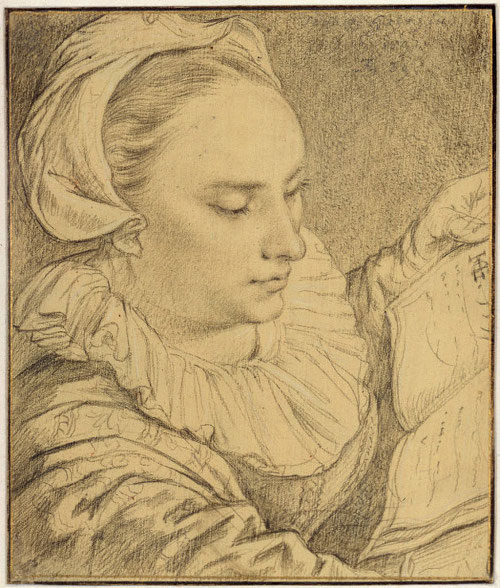
Below: Joseph Edward Southall, Head of a Girl, 1899, metalpoint (probably silverpoint) with scratching on prepared paper
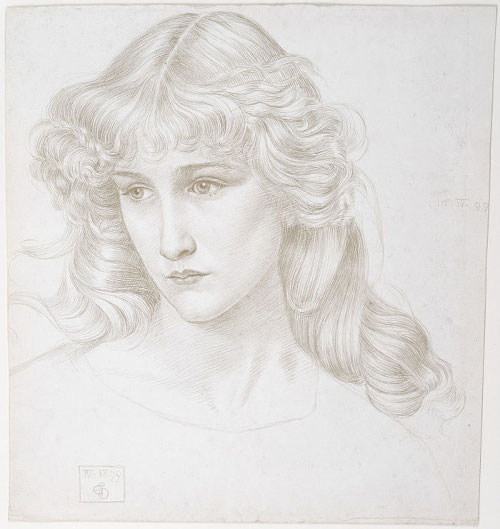
Below: Otto Dix, Old Woman, 1932, metalpoint (probably silverpoint) and graphite (?) on prepared paper,
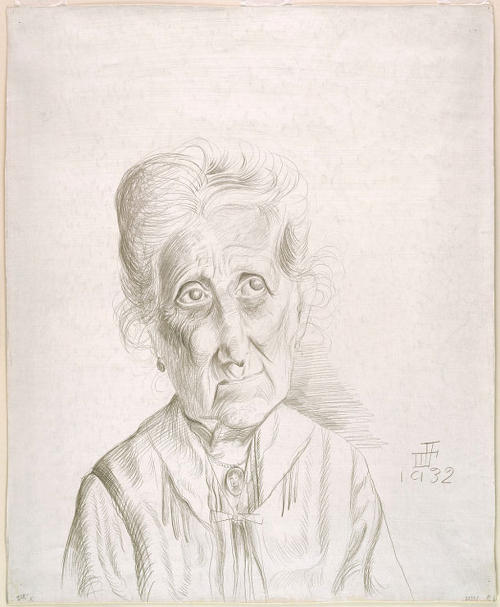
Dix is perhaps better known as a one of the Nazi's least favourite artists, someone who created some horrible depictions of war, wounds and disfigurement. This picture has a lot of charm, even wistfulness about it however, a true character.
More interesting detail can be found on the British Museum's blog.
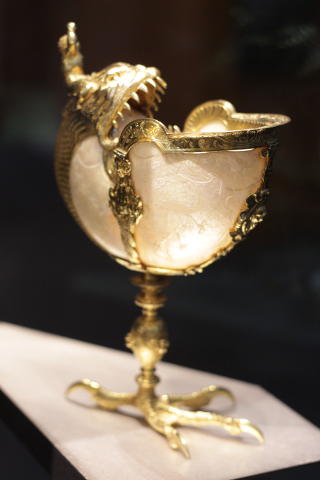
The British Museum's Waddesdon Bequest is a new gallery showing off a lot of real treasures Baron Ferdinand Rothschild accumulated in the 19th Century. It's free and contains some beautiful things, from medieval holy reliquaries to gothic jewellery. It even has a glittering 17th Century "robot" (an automaton).
The British Museum page shows off some of these stunning objects.
Have a look at this piece of art :

It is called Isis Threaten Sylvania and created by someone called Mimsy, on display in an exhibition called Passion for Freedom at the Mall Galleries last week. From The Guardian :
It was removed from the Passion for Freedom exhibition at the Mall galleries after police raised concerns about the “potentially inflammatory content” of the work, informing the organisers that, if they went ahead with their plans to display it, they would have to pay £36,000 for security for the six-day show.
Take a close look. As Mick Hartley says :
Imagine, in the late 1930s, if a gallery was banned from showing images of Nazis doing horrid things because it was deemed to be potentially inflammatory.
Note that no horrid things are even being displayed.
I really like the Mall Galleries, one of my favourite in London, and I would have visited this show on Saturday if other things hadn't intervened. So, it is very disappointing to see this happen. What makes this worse in my view is that the police can make this sort of declaration, in essence making something impossible to print, show or see (it's called censorship).
It is also ironic that the exhibition was dealing with the concept of freedom, something that seems to be diminishing somewhat in this country. Diminished often in the interest of preventing offence, hurting people's feelings or bringing up anything uncomfortable to various groups. What type of people are we becoming? Perhaps the sort of people who will eventually lose our freedom.
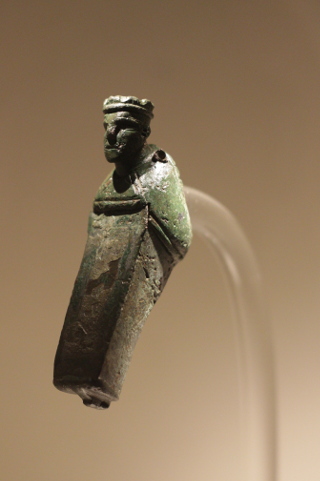
Introducing St Finan, an early celtic saint thought to have come over from Ireland in the 7th Century. No, he's not much to look at!
This is a photograph of a Bishop's crozier tip, on display at the National Museum of Scotland, and perhaps from the 12th Century. Found near Loch Shiel, Moidart, on St Finan's Isle. It's not much to look at, being quite primitive, but this is some of its odd attraction.
Finan was the second bishop of Lindisfarne, after the famous Aidan, and trained on Iona on the West coast of (what was not yet) Scotland. This was the great time of the spread of Christianity to the east coast Angles of the Kingdom of Northumbria, and the great debates over Easter between the Roman and Irish churches.
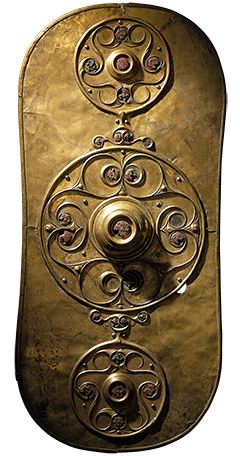
Julian Cope, ex-frontman of The Teardrop Explodes, the 1980's rock/indie band, has a piece in The Guardian. From the world of rock, and going slightly off the rails for a period, he went on to write a very unusual, but well regarded book, on pre-modern history, The Modern Antiquarian. He seems to have an abiding interest in archaeological and historical investigation, so a kindred soul perhaps.
In the newspaper, he has had a preview of the forthcoming show at the British Museum, The Celts: Art and Identity, Cope is at pains to mention how wide the curators might have drawn the Celtic identity line, but it's been stretched widely for a very long time now. It's really just a label for anything pre-Roman almost. However, it has still strong connotations when identity comes to the fore, especially of the national variety.
I'm looking forward to the show.

Back in town ... and the sun was shining!
It's not everyday you come across a "car" that looks like this, parked up near London's Mall. Looks like a 70's era Batmobile to me and it definitely drew some attention.
I overheard the owner (or driver) telling someone how they had to plan their route carefully to avoid any speed bumps (the car rides low), and how it wasn't very waterproof. Maybe not a good combination in London. Better in Gotham!
I didn't hear the engine running, perhaps just as well.
Anatoly Karlin writes about starting blogging again and about dealing with motivation and productivity. Regarding procrastination, something we all do sometimes but can become a big problem for some of us, he has an interesting comment :
When you are procrastinating, you are essentially trusting your future self to do the work that your present self does not want to. But if you make a habit of procrastination, of being unreliable, would it then be rational of your present self to depend on your (presumably equally fallible and unreliable) future self to do that what your present self is too lazy and slothful to do today? It’s grossly irrational and irresponsible!
In Why We Procrastinate, Alisa Opar posits that procrastination is something that we do because we do not consider our future self as being the same person we are. The background to this is the British philosopher Derek Parfit's view of a person's identity as something that changes as they move through time. We are not the same person in 10 years time as we are today: we see our future selves as strangers.
This idea of people becoming different people as they age, and their changing identity, is something that the writer and philosopher John Gray has brought up in his writing. Gray's an interesting writer but I had to pause my reading for a while to recover a bit of optimism about the human condition.
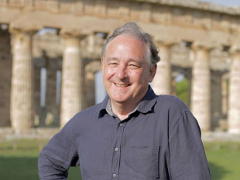
I watched the BBC's Building the Ancient City and was relieved it was a good, straight-forward history program presented by a proper Professor (Professor Wallace-Hadrill of Cambridge University).
History programs are quite popular and the BBC is well known for doing them well, but in my experience they have been getting worse with far too much emphasis on fancy graphics, portentous presentation and celebrity pomposity. Sometimes, half the show seems as much a "trailer" (for the next 10 minutes) as useful content. Give me Wallace-Hadrill or the great Kenneth Clark any day.
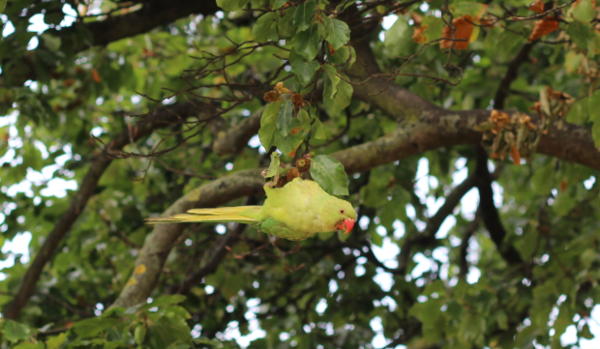
I didn't expect to come across a parrot in a tree on Clapham Common a couple of weeks ago, and it actually turned out there were three parrots in the same tree. I haven't seen them since in my walks but have definitely heard them! Luckily, I managed to get a fairly decent photograph to prove it.



The Usher Hall in Edinburgh was transformed last week, looking very colourful as part of the Edinburgh Festival opening.
This was the Harmonium Project by a company of artists and technicians called 59 Productions ("We combine technology and art to tell amazing stories").
Harmonium is a choral symphony by John Adams, an American composer, and each movement covers a whole poem by John Donne and (two by) Emily Dickinson. The production involved the projection of light and colour onto the outside facade of the hall, alongside the music itself. It must have been quite a show but nerve-wracking for the organisers hoping the weather stayed good!
You can catch some of the Usher Hall show on YouTube. You can also listen to all the music on YouTube.
Pictures from The Guardian.
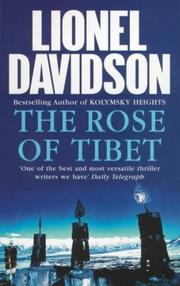
The Rose of Tibet
By Lionel Davidson
Lionel Davidson was a British writer whose first novel, Night of Wenceslas, was published in 1960. His second, The Rose of Tibet, was published in 1962 and I recently finished reading it. He wasn't very prolific, and sometimes took a long time to produce a new book (e.g. 14 years before his last), but he is considered by quite a few people as one of the best novelists no one has heard of!
The Rose of Tibet is a classic adventure story really, about an English teacher who travels to Tibet, sneaking in to the closed country to search for his missing brother. The year is 1951 and dark portents and prophecies are everywhere in the country, as China readies itself for an invasion. We not only have a Chinese invasion, but a beautiful abbess of a remote monastery, a fortune in emeralds, hidden secrets, monkey gods and a desperate survival strory. This sort of book would make a great film, perhaps in a similar spirit to an Indiana Jones.
From lioneldavidson.info :
The Rose of Tibet (1962) is Lionel Davidson’s second novel. His extraordinary and thrilling tale of a haunted land is among the very finest of its kind and prompted Graham Greene to remark: ‘I hadn’t realised how much I had missed the genuine adventure story until I read The Rose of Tibet ‘. Its combination of adventure and travelogue is further proof of Davidson’s great variety as a writer, and caused Daphne du Maurier to say: ‘It has all the excitement of King Solomon’s Mines ‘.
I'm with Graham Greene on this: it's very refreshing to read such a cracking adventure story again. I am looking forward to reading more.
I think the books are out of print, which won't help gaining an readership. I read mine as an e-book but definitely want to see paper versions. They definitely deserve better. I was struck by the extremely glowing reviews I came across a few years ago on the web for this book and his first.
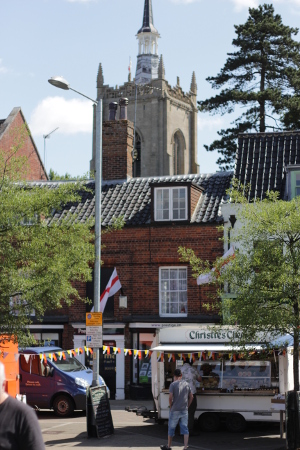
As luck would have it, I was in Swaffham, Norfolk, for the weekend of the 18 and 19th July.
This was the weekend the town celebrated the 800th anniversary of the first mention of its market, in the year 1215.
The town held a Medieval Festival, with lots of song, dance, jousting, archery falconry and an old-style market.
We also had King John, Archbishop Langton and the Barons getting together at the bandstand (after the little girls did their song and dance routine to 50's rock and roll).
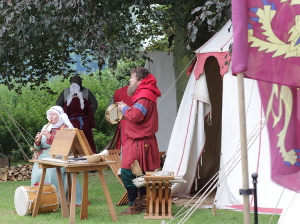
Lots of people out and about, the Saturday market busier than usual and an indoor arts and crafts fair, plus nice sunny weather.
A town crier kept everyone informed of the various things going on, when he wasn't cajoling a dance with one of the nuns present.
A very pleasant day out although I regret not buying a bottle or two of the "800" year old ale for sale.
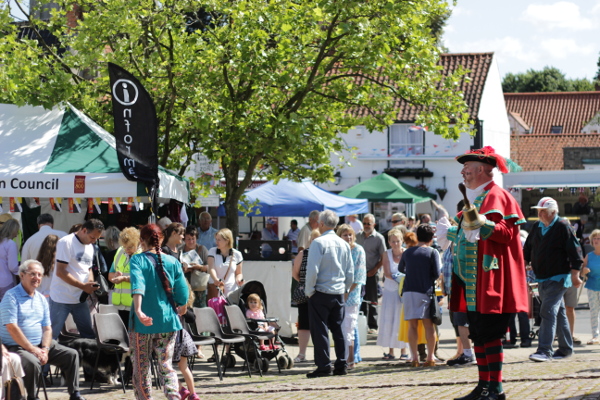
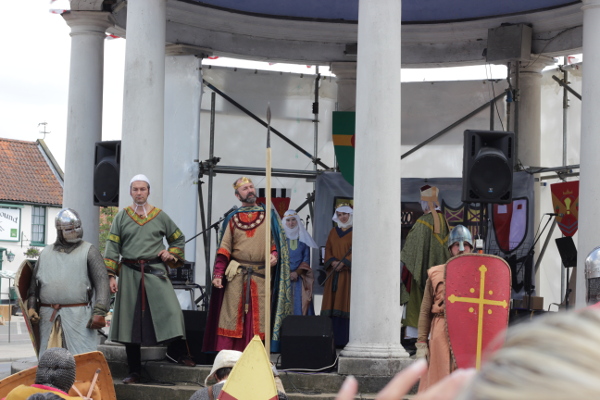
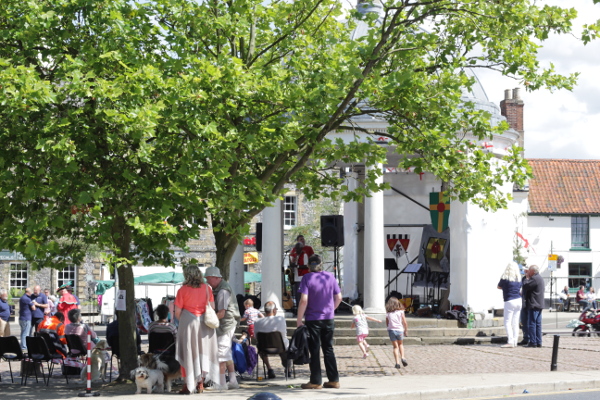
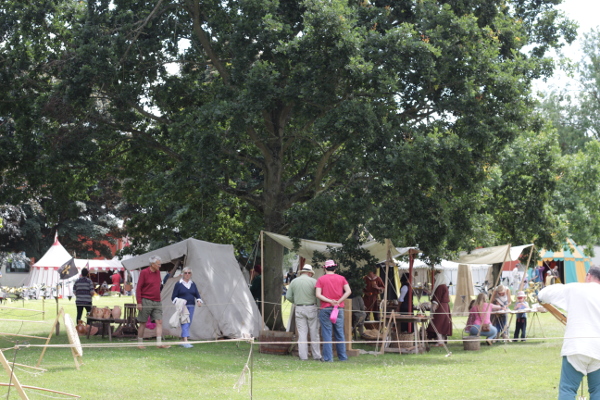
Dune
By Frank Herbert

The other thing I see now is how beautifully written the book is: it deserves its high reputation and many awards. The only minor quibble I would take is that I feel it ends a bit too quickly; some characters deserve a little bit more time perhaps.
On the right: The cover of the paperback I read back in the day. A wonderful Bruce Pennington painting.
I went to see an exhibition of some Pennington paintings at London's Atlantis Books a while ago. A lovely little show that really made me appreciate Pennington's unique style.
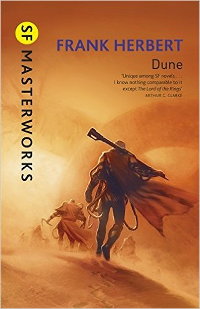
Left: The cover of the new hardback Dune novel I finished recently. A classic deserves a good hardback edition!
The heart of the novel is the coming of age story of the young Duke Paul Atreides, his awakening to his "terrible purpose" and wonderfully drawn relationship to his mother Jessica. The human and social core remains the most important aspect and is never dominated by hardware or science. This is definitely not a "hard" science-fiction book and it owes as much to Walter Scott as Robert Heinlein.
Beautifully written, fast paced and very moving in parts. If you have not read Dune, you should.
For a long time I had heard of Alejandro Jodorowsky's aborted feature film of the book from the 1970's, and
been disappointed it had not been made. However, having seen the recent documentary about
it, Jodorowsky's Dune, I'm
perhaps glad it wasn't. Jodorowsky's a very talented author and artist but he was far too keen on
his own ideas and bent on changing the actual story. It would not have been the same at all even
if it had looked and sounded amazing.
As for David Lynch's film, I saw it on release and did not really like it: too weird and
"gothic". Looking at it now however, I see a lot more to like, even though it is obviously
very flawed. There is a lot of deeper substance to Dune and the book deserves much more
than only an action and adventure treatment. Lynch tried this and failed (not his
fault alone) but a worthy try. What would Peter Jackson make of it?
From the letters page of The Economist :
Some argue that the Greeks have a problem with their economic culture. But
perhaps there is hope of change, for they were not always such bad debtors. The
last words uttered by Socrates were: “Crito, we owe a cock to Asclepius; pay it
and do not forget.”
JEREMY JOSSE
New York
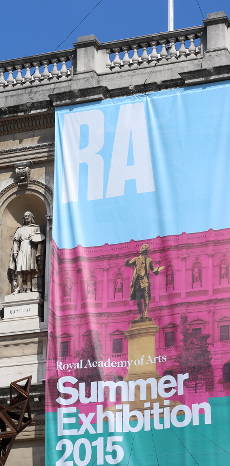
Lovely summer Saturday morning for a visit to the 2015 Royal Academy Summer Exhibition. A busy start to the show as well as the crowd waited for it to open in the sun-splashed courtyard. The courtyard hosts the first bit of the exhibition: a massive steel sculpture (looking distinctly rusty) called 'The Dappled Light of the Sun' by Conrad Shawcross (below). Appropriately named today.

Inside and up the stairs (brightly striped) to the main exhibition that covers 16 rooms, lots of space for lots of painting, print, sculpture and the odd "installation" piece. Odd is sometimes the right word.
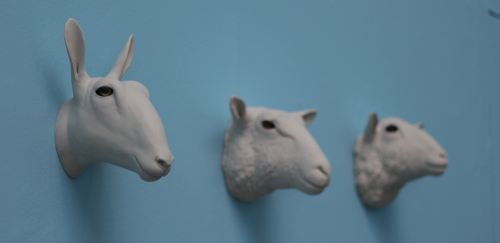
Above: sheep and a goat, Dido Crosby (link)
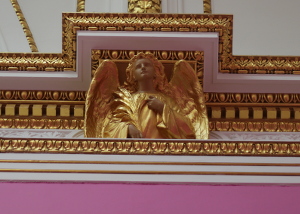
One thing I always notice at the RA is how clean and pristine everything is: the rooms, the ceilings, the paint on the walls, the floors. They do a very good job keeping the place spotless.
Right : A detail of the highly ornate ceiling in one of the rooms. Lots of this sort of decorative style inside, but perhaps a modern "Grayson Perry RA" style paint job?
Below: Erebus (Man on Fire Version II), by Tim Shaw (link)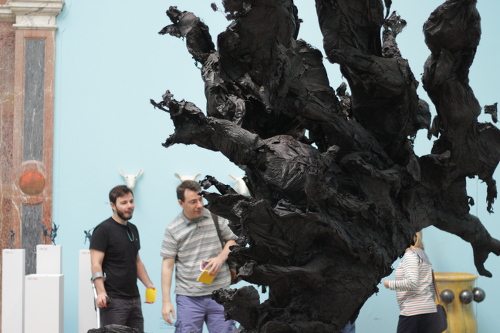
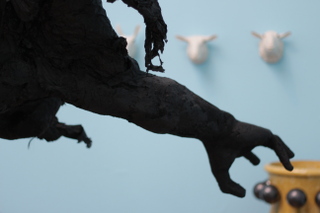
There is something slightly unsettling about this huge, bug-like mutation of a sculpture in the middle of the room. There is a man's body inside the black mass of exploding substrate, the head bent down and under, arms outstretched.
Below : People admiring a few of the late William Bowyer's works (link).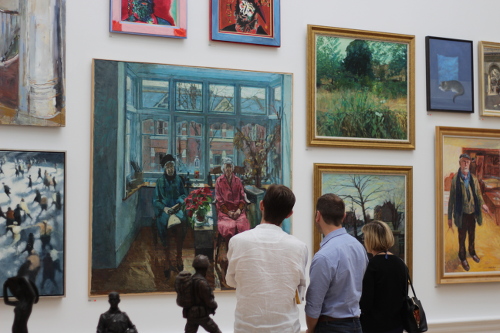
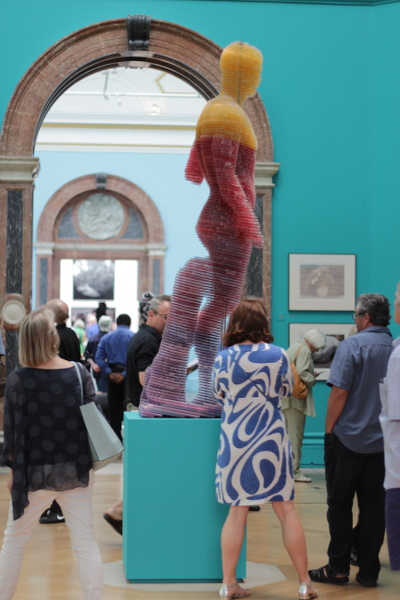
Right :
CAPTCHA NO.11 (DORYPHOROS), by Matthew Darbyshire
There are a huge number of things to see here, and a lot of pieces that I marked myself as things I particularly liked. I recalled liking Olwyn Bowey's work from last time but there are many others.
Looking back at the web site now, I appear to have missed two rooms! I try and be methodical but didn't manage it very well this time! Anyway, browse all the art at the Summer Exhibition Explorer web site.
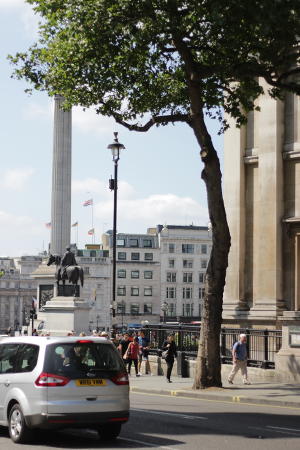
Lovely weather recently, and perfect for trips around town. Such as a second visit to the National Portrait Gallery and the 2015 BP Portrait Award.
In my experience, always a great show with some beautiful and inspiring works of portraiture. One or two are so personal and painful, it was hard to look at them. An example is the painting Juanito by José Luis Corella, shown below (links to the NPG page) :

The picture is of the artist's uncle and is very large and photo-realistic. It is quite hard to look at without a well of emotion surfacing; a very affecting picture.
Two other paintings stood out for me.
The first is an amazing diptych portrait by Leslie Watts, Charlotte and Emily. Beautifully painted in egg tempera :

Charlotte and Emily by Leslie Watts. Egg tempera on clayboard. 500mm x 400mm each.
Leslie Watts has her own blog.
The second painting is quite understated, and the winner of the second prize. This is Eliza, by Michael Gaskell. Painted in acrylic, the jumper and denim shirt are amazingly life-like. It's also very hard to paint such subtle skin tones in acrylic I think.
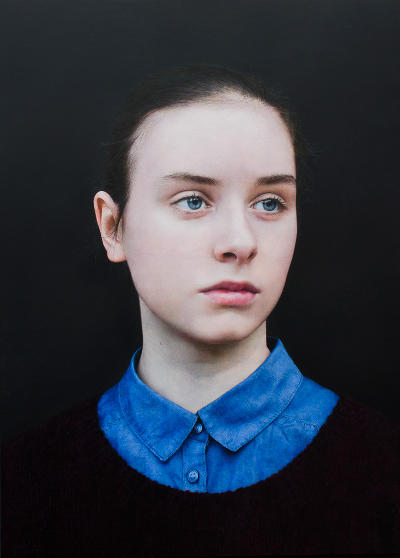
Eliza by Michael Gaskell. Acrylic on board. 370mm x 270mm.
His influences here are described as fifteenth century portrait painter Hans Memling. He has his own web site with more examples of his work. Some really amazing stuff.
Have a look at some other pictures from the show here.
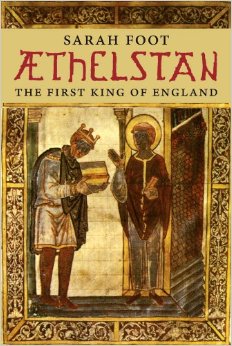
Athelstan, First King of England
By Sarah Foot
A fairly academic book in places (it is part of the Yale English Monarchs series) but mostly very readable to the lay person.
The main problem with Athelstan is that his life has a very limited documentary record, especially compared to his grandfather, Alfred the Great. This is a shame since he is a very important early king, the first King of England really, and even someone who could claim overlordship over the whole of Britain to some degree.
Sarah Foot is Regius Professor of Ecclesiastical History at Christ Church, Oxford, and has appeared a few times on the BBC's In Our Time radio programs. On radio, she has taken part on programs that went through the Life of Bede, Alfred's Battle of Edington and, of course, Athelstan. It was on this program that I first heard of the battle of Brunanburh, a decisive victory of the Anglo-Saxon army over the combined forces of the Scots, Welsh and Dublin Norse.
The site of the battle was probably the North West of England around the Wirral, but no one knows for sure and the battle and its significance has been all but forgotten. In some ways, rather like Athelstan himself. Maybe this was due to his background (some question over his mother's lineage) or possible accessory in his brother's death shortly after his (probably) contested coronation. Whatever the reason, Alfred has well and truly eclipsed his grandson.
If you want proper detail about what we know about Athelstan however, this is the book for you. For a more accessible guide. Michael Wood made a very good documentary for the BBC called In Search of Athelstan and you can watch it all on YouTube.

I was at the Society of Women Artists last week at the Mall Galleries. As usual a great show of art, and some favourites are below (but really, too many to show). A couple of photographs below are a detail only, and one or two have an indecipherable description (sorry).
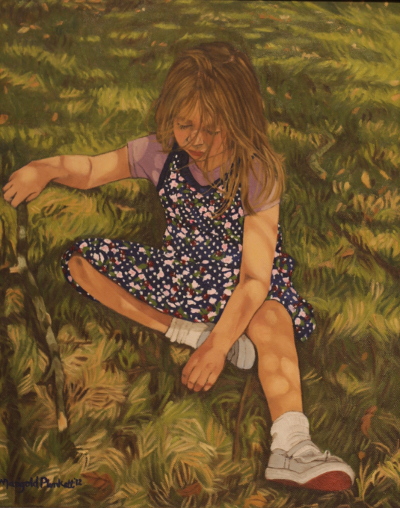
Marigold Plunkett, Lost in Thought. Oil.
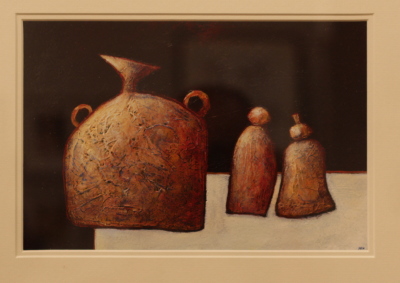
Annie Ward, A Democracy of Pots: The Gathering. Acrylic.
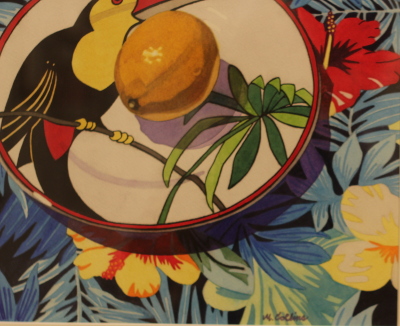
Marjorie Collins, ... (detail). Watercolour.
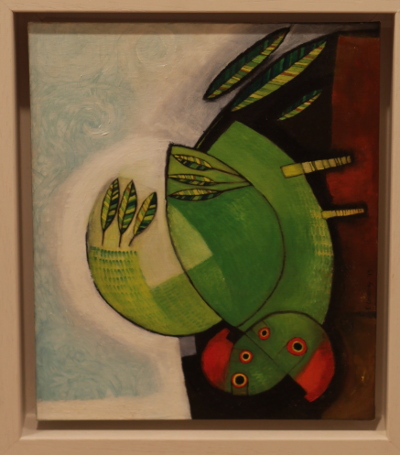
Orsi Cowel-Lehoczky. Parakeets, Number 1. Oil.
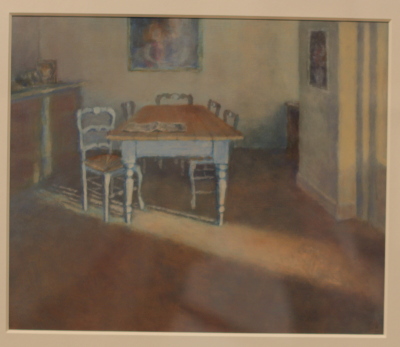
Jan Hunter. ... Acrylic.
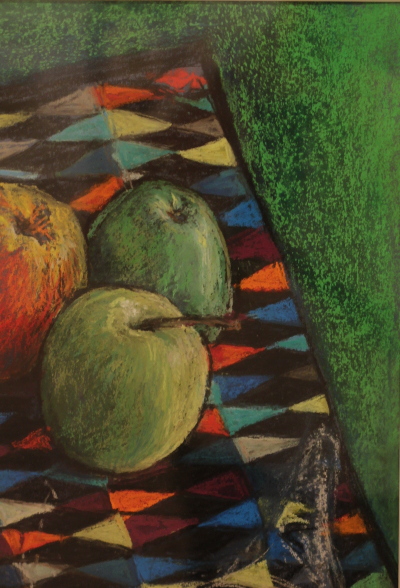
Patricia Clements, Three Apples (detail). Pastel.
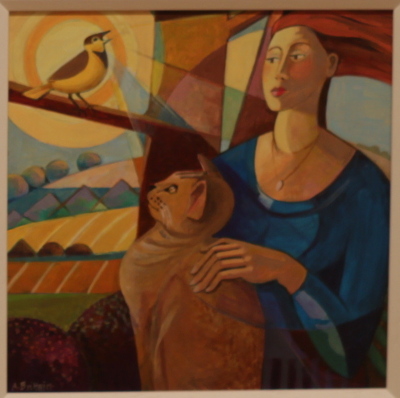
Angela Brittain, Lark Song. Acrylic.
Not sure who this is now (perhaps Hadrian) because I didn't get the description, but it's from photograph I took in the British Museum :
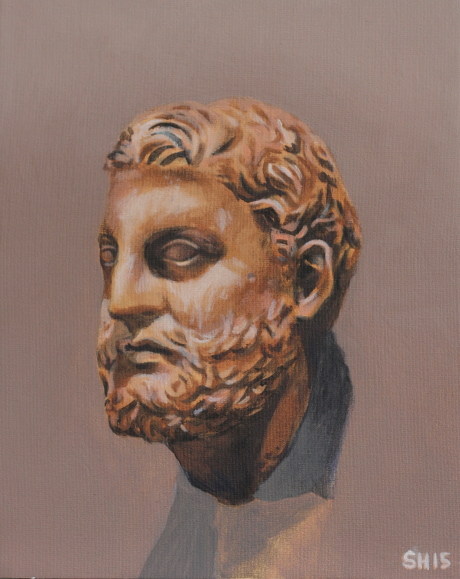
20x25cm, acrylic on Daler Board
I thought it would be a chance to have a go at the "classic" art practice of drawing (or painting) a sculpture, looking for the light and shade. I'm quite happy with it, although the painting is much better in real life.
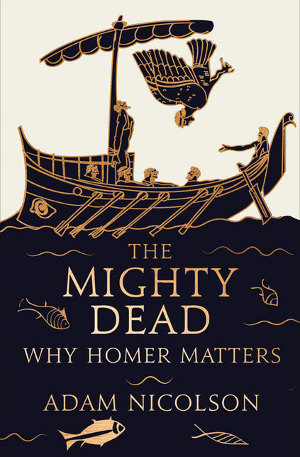
The Mighty Dead, Why Homer Matters
By Adam Nicolson
One of those uncommon books where you have to savour the writing in the reading of it. A beautifully written, poetic book that digs deeply into the origins of one of the foundations of Western Civilisation: Homer's two epics The Illiad and The Odyssey.
This is also a very personal tale at times. Nicolson does not flinch at his own past, using it to reflect on the way Homer's world works, however brutally.
And as he points out, the Greek Heroes are extremely brutal. Blood drenched, selfish, pumped up and boorish: a gang of thugs who revel in shouting and killing. There is a well placed analogy with the sort of life a modern inner-city gang member lives, where violence can be a way of life, and "respect" is a dangerous thing to slight or ignore. It's almost a meeting of two worlds: the civilised and settled city (Troy) and the warrior society from the Eurasian steppe (the Greeks). Nicolson posits that, in effect, there may be some historical truth to this. From such beginnings, what timeless beauty can be spun though.
On the beginning of the age of bronze in the near east :
At the same moment, but further north, the new metal had an equally powerful effect on human history. A cluster of economic, social,military and psychological changes came about in a wide swathe of country which stretched from the steppelands around the Caspian Sea through the Balkans and on into Northern Europe. These changes created the civilisation of which Achilles is the symbol: not a city world but a warrior elite, ferociously male in its focus, with male gods and a cultivation of violence, with no great attention paid to dwellings or public buildings,but a fascination with weaponry, speed and violence.

Left: The so-called "Mask of Agamemnon", a gold sheet funeral mask that covered the face of a buried man in a Mycenean shaft grave (Circa 1500 BC). Discovered by Heinrich Schliemann in 1876.
There's plenty of archaeology here and not just the muddy sort: we also have to dig into the literary past and even more, the linguistic levels of history to see what odd, pre-Greek words still exist as a memory of a more ancient existence. How long can such a memory exist and be passed down the generations in song and poem, orally? Perhaps a surprisingly long time. "Homer" is supposed to have put these masterworks down in written form in the 7th or 8th Century BC, the actions in the books having taken place around 1200 BC (500 years earlier).
The Illiad is suffused with blood and a pleasure in its cold-bloodedness. Achilles is the preeminent figure in the violence he unfurls, but the cunning Odysseus and the other Greeks are not far behind in the love of fighting and killing. The conjecture Nicolson expounds is that perhaps the actual events are much older, and he makes the case that we might push the siege of Troy back another 1000 years, or at least to the earlier 2nd Millenium BC. Whatever the truth of this (and I understand it is controversial and not necessarily backed up), it is an intriguing idea.
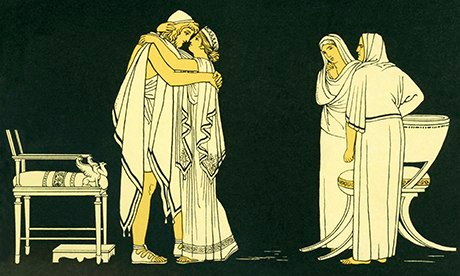
Penelope welcomes Odysseus home to Ithaca. This looks very civiised, but in the book, he wades in blood having slaughtered not only her suitors but various serving girls as well.
It is actually quite shocking to a modern sensibility.
The whole book is poetic and thought-provoking and perhaps as importantly, makes one want to re-read Homer. Not only that, but with a greater awareness of the translation. Excellent work.
I also decided to rewatch Michael Wood's BBC documentary series from 1985, In Search of the Trojan War. I've blogged about this before: the series is very good. I'd love Wood to do at least one more program to update us on the latest of Troy, and Greek prehistory.

As a follow-up to the post about the Ravilious exhiibition at Dulwich Picture Gallery, I had a wander in the neighbourhood before it opened.
It's hard to believe that these leafy, quiet, tidy and well-to-do streets are actually in the London Borough of Southwark.
As you can see on the right, Southwark actually covers a tremendously long strip of land, all the way from the river (London Bridge, Borough Market, Tate Modern) down to suburban Dulwich (Dulwich College, Dulwich Picture Gallery). At the top, it is directly across from the City of London (4 on the map). Lambeth, where I live, is to it's left but at the river end, it gets quite confused as to which borough you're in.
White picket fences ... can this be Southwark?

Or this ...

There's actually a tollbooth on this road, which appears to be private. Lots of private roads in the area in fact, and well tended lawns and sports fields.
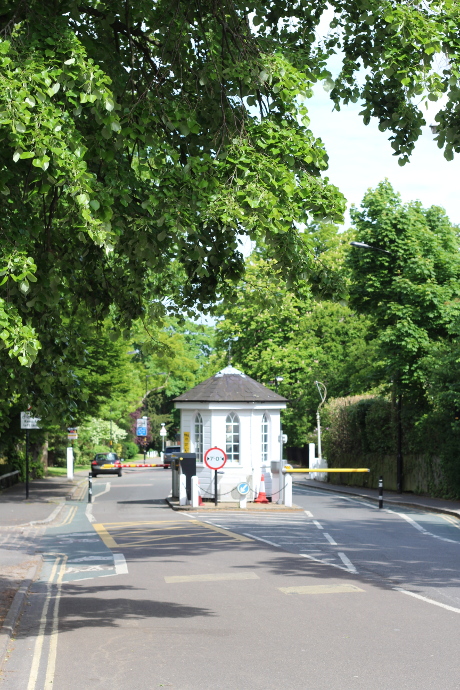
Brixton's a few minutes cycle away, but that's crossing into the borough of Lambeth.
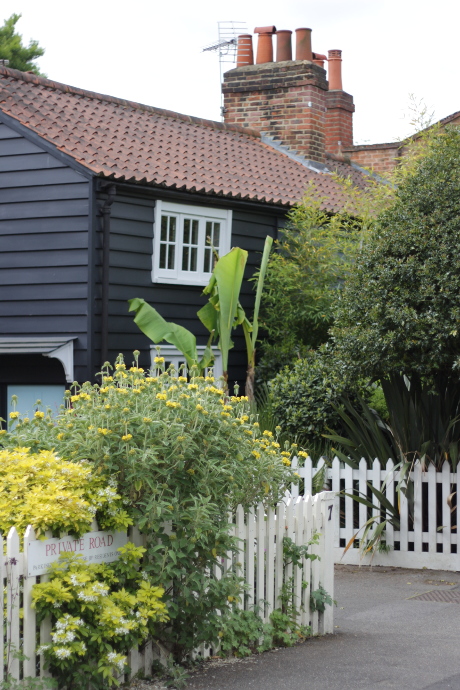
Southwark's actually one of the oldest parts of London, but that's the river end.
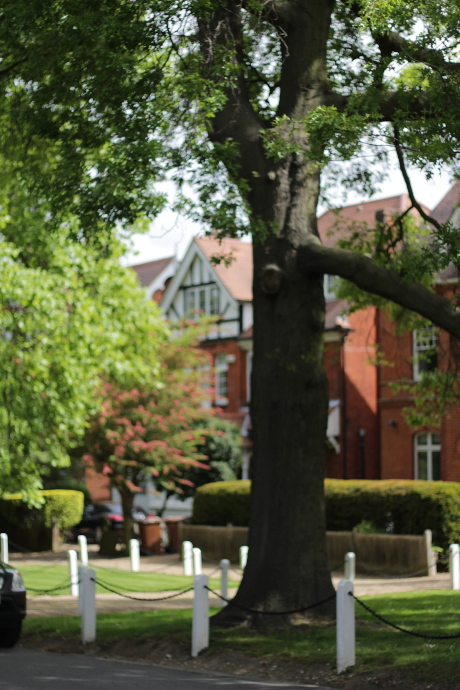

A pretty nice place and I'm ashamed to say that I haven't even had a look in the park yet. So, how much do these places cost? Let's start at a million ...

I almost didn't go, but seeing such different journalists as Peter Hitchens (Mail) and Ian Jack (Guardian) give such high praise changed my mind. It's always a pleasure visiting the Dulwich Picture Gallery and this time I also took a look around the surrounding area a bit.

Eric Ravilious was only 39 when he died, coming down in a plane somewhere in the North Atlantic in 1942. He ended his life as an official war artist. His pictures are mainly watercolour and pencil, with a muted palette but a certain lightness watercolour is so good at expressing.
The lovely thing about his paintings is the bygone world it represents, perhaps a particular Englishness. There's a feel for a civilised suburban middle-class existence in the 30's, a world that was wiped out by the devastating interruption of the Second World War and its aftermath. A lot lost, not just in human lives. It seems almost mythical now.
Train Landscape, 1939 :
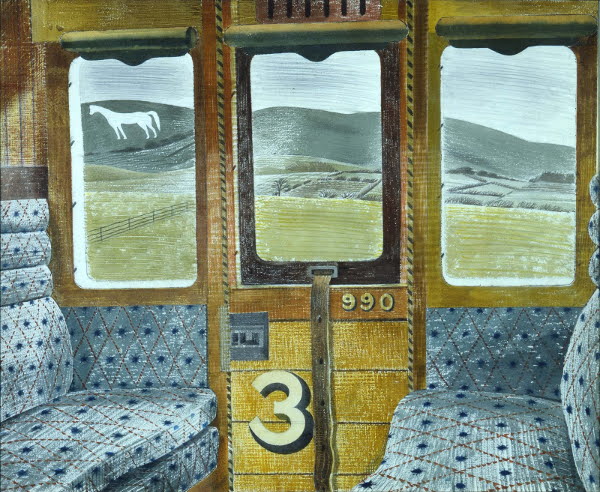
Chalk Paths, 1935 :
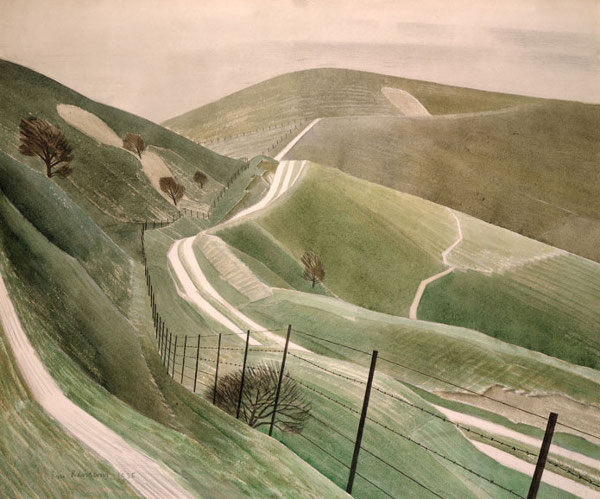
The Wesbury Horse, 1939 :

Britain After Rome
By Robin Fleming
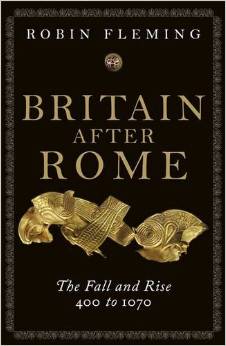
I mustn't let this book slip by without a short mention. Britain After Rome covers the period from the early 400's to the mid-11th Century in pre-Conquest Britain. From a peripheral part of the Roman Empire, we move into a very different world of British, Romano-British, Germanic and Scandinavian "interaction". Fleming has written a detailed and semi-academic book with some real history backed up by actual archaeology.
A little tough going at the start but as she says in the introduction, she wants to try and concentrate on the archaelogical record to uncloak as much of the ordinary life of the people of the period as possible. This means less concentration on the great lives, or written sources (such as they are) and more on burial custom, building and economy. Fleming only briefly covers Wales but this an interesting section on how the Viking micel here (Great Heathen Army, arriving around 865 AD) affected the Welsh kingdom of Brycheiniog.
Scotland and Ireland also figure less prominently although another interesting section covers the possible reason for finding the remains of a 9th or 10th century Yorkshire woman in a Viking/Norse cemetery in Cnip, Isle of Lewis :How did an English-woman end up living at the center of a vast, Norse-colonial, North Atlantic world with a group of grave-goods-using Norse settlers? The most likely explanation is that viking slavers derailed her life in some unrecorded raid and, as a conequence of it, she spent her final years among foreigners who owned her.
One is often reminded about the ubiquity of slavery through-out history.

On the left: An Anglo-Saxon burial urn. The body was cremated and then placed in the urn and buried. There was a great variety of burial custom in use, including cremation and inhumation (burial of body in ground, either directly, or in a coffin of some form). Grave goods got less common as christianity took hold.
This is a book worth a read by anyone seriously interested in what might have happened in Britain during the six centuries that passed before the country's reintegration to the continent as part of the Duke of Normandy's domain.
There is no shortage of advice around; books or web sites offering all sorts of helpful thoughts on how to live a good life, be happy, fulfilled. How to live without regrets.
I don't tend to linger on this sort of thing but occasionally something comes along that I think is worth the read, and worth passing on. Sam Altman, a silicon valley entrepreneur, programmer,venture capitalist and blogger, recently wrote something that triggered this reaction :
The Days are Long but the Decades are Short
2) Life is not a dress rehearsal—this is probably it. Make it count. Time is extremely limited and goes by fast. Do what makes you happy and fulfilled—few people get remembered hundreds of years after they die anyway. Don’t do stuff that doesn’t make you happy (this happens most often when other people want you to do something). Don’t spend time trying to maintain relationships with people you don’t like, and cut negative people out of your life. Negativity is really bad. Don’t let yourself make excuses for not doing the things you want to do.
Number two is fairly standard, but still needs saying again sometimes, and pondering on occasion. Some other points he makes are more aligned with work, perhaps even the type of startup culture he moves in, but this culture also tends to infuse many more places that just Silicon Valley nowadays.
More at the link.

Well, it is possible to get a dirty, greasy five year old white brompton clean, it just takes T-Cut and Turtle Wax. Plus a lot of elbow grease.
I put my white brompton into Brompton Junction for a service (turned out to be the "factory service") and it came out sparkling. I could never get it like this; never managing to get all the grease and grime completely off. A discussion with one of the engineers let me in on how they do it. But as they said: a lot of hard work as well to polish it up.
The engineers in the shop not only know their stuff but are also very happy to help out and answer questions.
Of course, now I want to avoid showers as well, and mud. I've failed in that already this week.
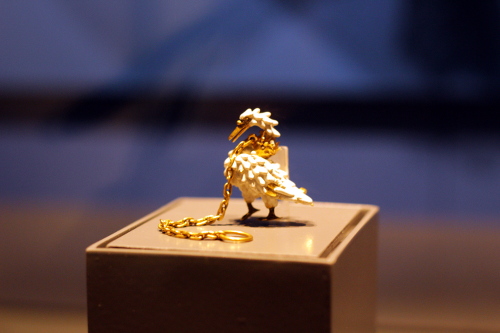
About 1400, England or France, gold and enamel jewel. In the British Museum.
The Dunstable Swan jewel was found in a Dominican Priory, Dunstable. It may have been worn to indicate an allegiance to the de Bohun family or to the House of Lancaster. King Henry IV (reigned 1399-1413) took the symbol of the swan when he married Mary de Bohun in 1380.
It is made from opaque white enamel fused over gold, a technique known as émail en ronde bosse that developed in Paris in the second half of the fourteenth century. The chain and coronet attached to the swan's neck are also of gold.
What a nice surprise seeing how many of Mary Pym's paintings have the "sold" red dot beside them at her show at Llewellyn Alexander. Maybe more than 80% snapped up, some buying two.
I can see why people like them: they have a modern, semi-cubist, cézanne-like look, paintings that could look great on many modern walls.
Mary Pym, Sun Up :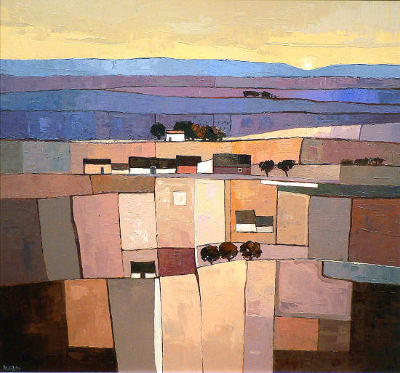
Mary Pym, Moon Over the Inlet :
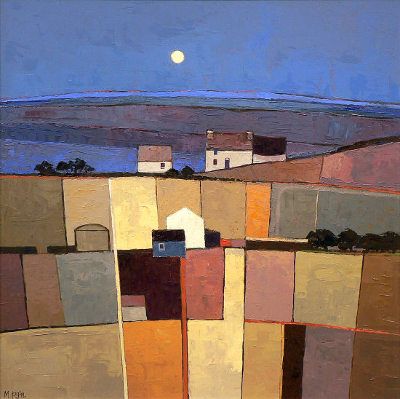
She certainly has a style.
A new painting from a photograph I took on a bright, sunny morning in December last year. The painting :
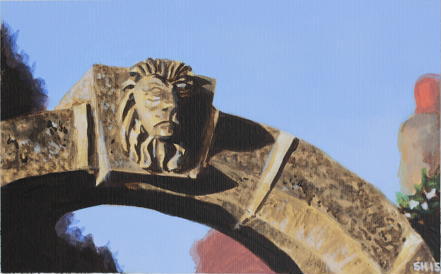
Swaffham Stone Lion, 25x35cm, acrylic on paper
This was painted on Fabriano 400g/m2 acrylic paper which is quite thick and heavy and seems to work well, (although I was not painting very thickly). One advantage to using paper like this is that it's easier (and cheaper) to frame if you want to.
On the day, the sun was out and the sky was a nice strong blue against an unusual stone lion sitting on top of the arch of someone's gate. An interesting detail and worth a photograph. Worth a painting? I think so, and I'm quite happy with it.
The photograph :
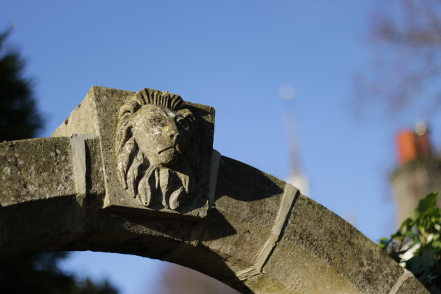
Some artistic liberties taken of course (a few known as mistakes) ...
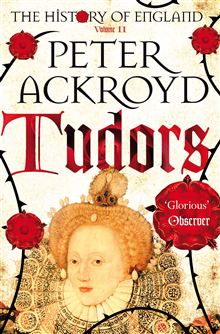
Tudors
By Peter Ackroyd
After all the Mantel and Cromwell, have I reached Tudor overload? No, not yet. It's just a fascinating period and there's usually something interesting to learn, or a better way to say something.
Peter Ackroyd's book is the second in his history of England, and the first I've read. He's a good writer who loves his subject and this was no exception. It's quite a worn path, but he still manages to bring some fresh words to the story of the monsters: Henry VIII and many of his associates.
The 16th Century was the age that the outlines of the modern state started to become visible, if only in small ways (and not necessarily good ways). Although the next century saw a civil war, the Tudor century was as revolutionary: reformation, heresy, protestantism, dissolution and supremacy. A massive rupture with the past.

Great stories, and some classic of course, but it is hard not to come away with a severe aversion to an aristocracy that treated so many people so badly, and in such an arbitary way, Magna Carta or not.
Roll on the Revolution ...
Maybe "No Tudor overload yet" but also reminded that I've not written any thoughts about the recent BBC Wolf Hall TV production. I really have to get round to this.
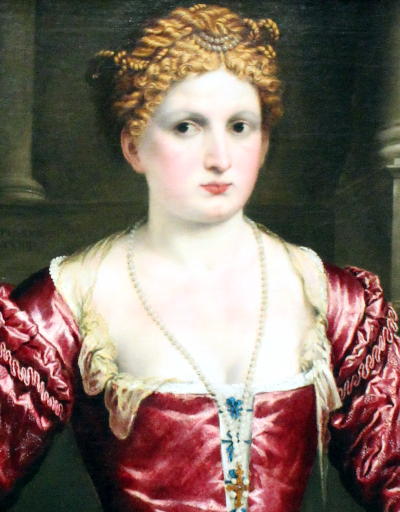
by Paris Bordone, around 1545.
A beautifully painted (sumptious is the right word) picture in the National Gallery by Paris Bordone. The better sort of 16th century girl didn't go in for a sun tan. Mind you, with hair as red as that, it might have been a bit dangerous as well.

If you like art, the Artsy site is worth a visit. Not only is it well put together, it has a lot of good content i.e. great art. If you click on an image, you can (usually) zoom into an image and get a proper look at it as well.
Of immediate interest is seeing the shows, both current and previous, listed for a museum. The page for the National Gallery includes a good selection of work from the current show, Inventing Impressionism :
Looking forward to the Goya show later in the year.
Similar to Artsy is the Google Art Project, which also lets you zoom around museum collections around the world. I'm sure you can spend hours on a site like these.
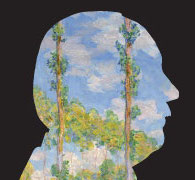
It's always worth looking at impressionist paintings, whether the french or american variety. I blogged about the American Impressionism exhibition in Edinburgh last year.
So a new exhibition at the National Gallery, Inventing Impressionism, is an essential visit.
In fact, this is the second time I've been to this show. Being close to some original, new (to me) Monet, Sisley, Pissarro and others is something I find hard to resist.
Another reason I decided to part with my money again was the Renoir on display. Pierre-Auguste Renoir is an artist I generally fell out of love with a long time ago, feeling that they were far too bright, sweet and even "fluffy" (for want of a better word) for my taste. There are a couple like this in the show but this new exhibition begins with some wonderful Renoir's that have reset him in my estimation. Full of colour and life.
Some examples :
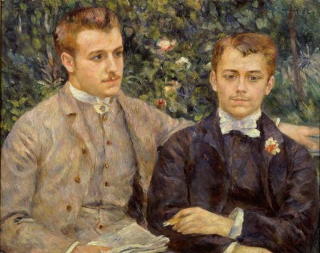
Portrait of Charles and Georges Durand Ruel
Oil on Canvas, 1882
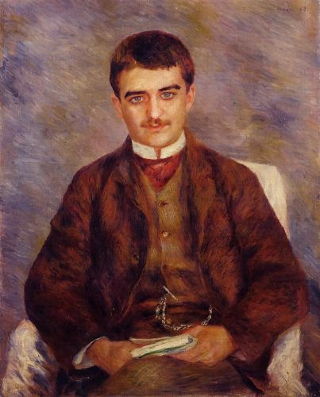
Joseph Durand Ruel
Oil on Canvas, 1882
The Daughters of Durand-Ruel
Oil on Canvas, 1882
Click for larger.

Portrait of Mademoiselle Legrand
Oil on Canvas, 1875
A few other works of his also stand out here, especially his tall paintings of couples dancing, such as Dance in the Country.
Of course, in addition to the Renoir, we also have many great works from some other well known impressionist artists, including Claude Monet, Alfred Sisley and Camille Pissaro. These three artists are often very similar in style, so much so that it is sometimes hard to tell them apart.
The Train in the Snow
Claude Monet
Oil on Canvas, 1875
The Bridge at Villeneuve-la-Garenne
Alfred Sisley
Oil on Canvas, 1872
Entrance to the Village of Voisins
Camille Pissarro
Oil on Canvas 1872
The Galettes
Claude Monet
Oil on Canvas 1882
A lot of paintings here are from private collections, or american galleries, so a lot new to see. It is definitely worth travelling to catch them here while you can. The show ends at the end of May.
The Curious Incident of the Dog in the Night-Time
By Mark Haddon

On the way home each day from work, I often notice the large banner advertising the production of The Curious Incident of the Dog in the Night-Time at the Gielgud Theatre on Shaftesbury Avenue. I bought the paperback a few months ago in a charity shop and thought I'd whittle down my "to read" list.
The book by Mark Haddon appeared a few years ago and won many awards and plaudits. The story is very basic : an "investigation" by a 15 year old autistic boy into the circumstances of the killing of a neighbour's dog. The story is "written" by Christopher and so has a child-like quality to it. But the major aspect of the book is Christopher's autism: this permeates everything he writes about and everything about his world.

Anyone who recalls the film Rainman knows some basic features of this condition: problems with social and personal interactions, an inability to look people in the eye, or understand facial expressions or emotions, a sometimes excessive interest in more "mechanical" thoughts or behaviours. The condition is a spectrum however and has many possible aspects. We see the pain and difficulty of life through Christopher's eyes and come to appreciate not only his own terrible problems but his family's as well. In some places it is hard to read because of this, but also enlightening (and funny in parts). I have heard the book praised by people with direct experience of autism, whether personally or within their own family.
The book is not long and a quick and "easy" read. Although I thought it was well written, it is still written "by" a child (and one with autism) and is therefore sometimes a bit too "simple" for my taste sometimes. However, it is still an excellent way to see the world from a very different perspective and this is one aspect of a fine novel.
I am also very tempted to go and see how well the book translates to the stage.
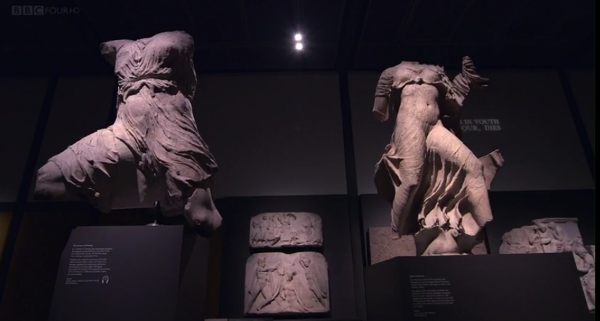
The BBC have a program in their Secret Knowledge series about the Defining Beauty show at the British Museum.
If you can, catch the program on iPlayer.
The Lathe of Heaven
By Ursula Le Guin
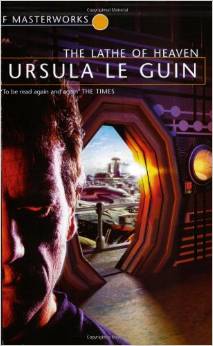
It took me a while to get into this book, the first third seemed a little slow. Thankfully though, it got a lot better and by the end I found it moving.
George Orr's dreams change waking reality, and all of history making up this reality. A gift? No a curse. Wanting to be "cured" of this terrible burden, he is given therapy by William Haber, a scientist and sleep researcher. The talented, well meaning but somewhat megalomaniacal Haber decides to use Orr instead, directing the dreams himself using a machine of his own design. Whatever good intentions Haber has, dreams are far from logical and things do not always go to plan. The world goes through a number of (sometimes) radical changes throughout the book as a consequence, until Orr discovers some understanding of his place in the world.
There's a fair amount to digest here, not least the nature of reality. Le Guin weaves in some Chinese style mysticism, from the novel's title, the Lao Tse aphorisms that often head the chapters and the toying with the dream versus the real. Much the sort of thing Philip K. Dick was always juggling in his books.
Those whom heaven helps we call the sons of heaven. They do not learn this by learning. They do not work it
by working. They do not reason it by using reason. To let understanding stop, at what cannot be understood,is a
high attainment. Those that cannot do it will be destroyed on the lathe of heaven.
-- Chuang Tse: XXIII
This quote gives the novel its name but it's a misquote apparently.
A bit of a slog to start but in the end worth reading, with some thought provoking ideas. You have to be careful what you wish for.
Stories of Your Life and Others
By Ted Chiang
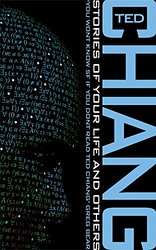
I saw Ted Chiang's work come highly recommended online but had never heard of him. When I saw a very cheap kindle version of a book of his, I took the chance and bought it.
A small book of (eight) short stories, Stories of Your Life and Others was well worth downloading and reading. It starts with a story set in the (supposed) past with the builders of the Tower of Babel, reaching the sky and beyond. From there, it covers stories dealing with the consequences of a massively enhanced intelligence, alien contact and communication (and how it changes one person's own thought processes), a problematic maths discovery and other off-beat and thought-provoking stories. They often have a fascination with maths, language, discovery and our future trajectory given the many changes we see around us.
Here's an article onine about the author
He's not very prolific and this seems to be because he sticks with another job he likes (technical writer) and likes to think through his writing deeply. This seems to work very well.
It's been a while again (almost 12 weeks!) but I finally sat down to do a bit more painting, again following the path of least resistance and using a Will Kemp tutorial.
Many of these portrait painting tutorials use something called a "Zorn Palette", after the 19th Century Swedish painter Anders Zorn, someone I'd not heard of before. A limited palette using only ivory black, titanium white, yellow ochre and cadmium red (although some raw umber is also used for the ground).
Zorn painted Portrait of Emma Zorn and my small, cropped copy is below.
If you follow the linkt, try to ignore the (probably) great difference in colour you'll see. Colour calibration needed as always.
This is a small painting (6"x8") in acrylic on Daler board.
This is "version 1" - version "2" has turned out much worse unfortunately. It was supposed to be am improvement but it looks like I'll abandon and junk.
Kemp paints this Alla Prima, apparently in one go, under an hour. I took two or three sittings, one about 20 minutes for the greys and base, then a couple more of 20 or 30 minutes each for the skin tones and the completion.

A good visit to the new British Museum exhibition Defining Beauty, a look at how the Ancient Greeks represented and viewed the human body. Mostly beauty here but there are some contrasting views of the uglier, whether the satyr, centaur or Socrates himself.
Socrates was famously quite ugly, although very appreciative of the beautiful young male athletes he watched in the gymnasium. Hmm. Ahem, anyway, the inimitable Brian Sewell talks about this side of the show.
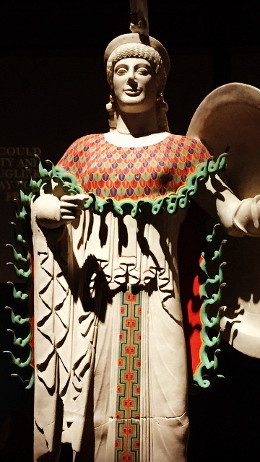
It was quite a revelation a few years ago when it became apparent that the pure white marble we're familiar with was anything but pure and white when first erected.
Researchers have come to the conclusion (since backed up conclusively) that the Ancient Greeks painted their sculptures and statues in bright colours, perhaps to a garish degree to the modern eye. This was on display in the second room of the show and was startling to see for a change. Very different.
Right: Restoration of the polychrome decoration of the Athena statue from the Aphaea temple at Aegina, c. 490 BC. See wikipedia.
Below: Trojan archer from the Temple of Aphaia on Aegina, Greek, c. 490-480 B.C. As it exists now on the left and on the right, as it would have looked (and as displayed in Defining Beauty).
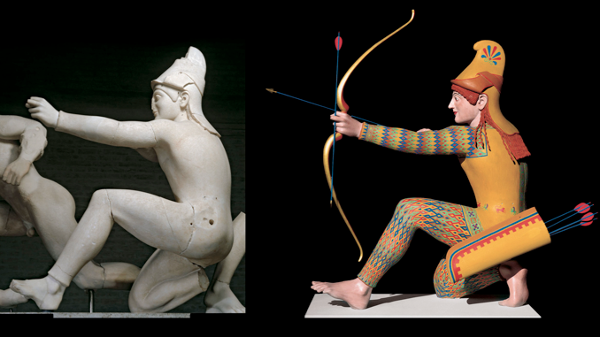
Some more examples of what the old statues might have looked like in place, and discussion :
- Dazzlers (Harvard Magazine)
- True Colors of Ancient Greek and Roman Statues
- True Colors (Smithsonian Magazine)
- Carved in Living Color (Archaeological Institute of America)
Leaving aside the colours, most displays were the normal grey and white stone (with some bronze) but there is some amazing work here.
This includes the very beautifully carved drapery on Iris, from the west pediment of the Parthenon.
Iris was a messenger god and was placed to accompany Poseidon. With her wings now missing, she was carved as if just coming in to land on the building.
Click the picture for a slightly larger version (then use the back button to return to this page).
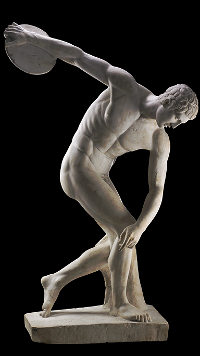
Also on show, the large discus-thrower (discobolus). This is a Roman copy from the 2nd century AD of a bronze original of the 5th century BC. Statue from Hadrian’s Villa in Tivoli, Italy.
Quite a few on display are actually Roman copies of lost Greek originals. Luckily, the Romans made excellent copies and were great students of the Greek style. This is an amazingly life-like and well made piece.
Perhaps the last thing to mention is the exhibition display. On show in the Sainsbury Exhibitions Gallery, a new space to me I think, the rooms are large and tall, and the lighting dramatic in the dark space. This made a very welcome change from the standard display rooms, brightly lit and against similar grey and white stone and marble floor and walls. The British Museum is lucky to have these works in its permanent collection.
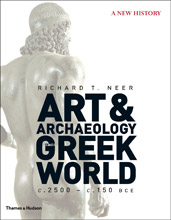
The publisher Thames and Hudson have a page on it where you can click the book cover for a look inside. A beautiful large format hardcover like this is beyond the capabilities of an e-book.
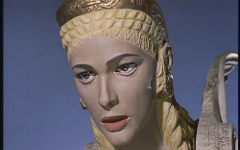
The British Museum have a good blog post on the exhibition's design. Worth a look.
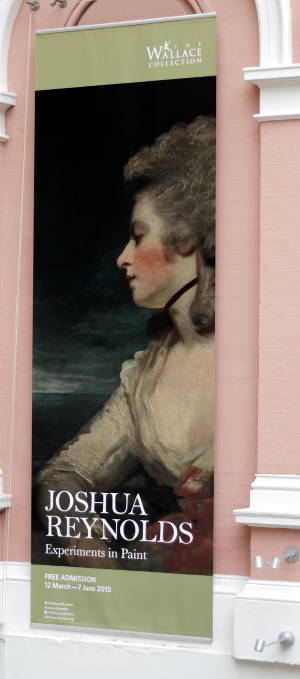
I've never been a great admirer of Sir Joshua Reynolds, the 18th Century English painter/portraitist, and first president of the newly created Royal Academy. A look around the small exhibition of his work at the Wallace Collection has made me somewhat more sympathetic though.
His paintings often appeared a bit flat, or "dead" to me. I knew his work is well-known as being badly affected by time, deteriorating a lot over the years, but I had not realised that a lot of this was due to his experimentation with the medium. Oil painting is sometimes as much a science as an art, hence the experimentation. It's also another reason many people find oils hard to use.
Some of the pictures are very good but sadly quite faded. Still, there is some beauty here and this (free) show is worth a visit to the superb Wallace Collection to see.
A few pictures I took below, including : a Reynolds self-portrait (downloaded, no photography in the exhibition), some Greek nymphs, a lovely French 18th Century weather gauge ("Beau Temps"?), Pluto abducting Proserpine, The Lace Maker by Caspar Netscher and finally, Madame de Pompadour by François Boucher.
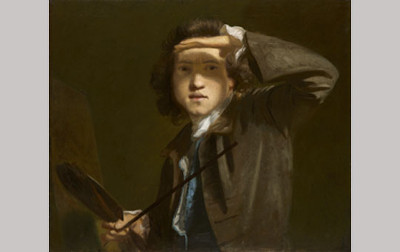
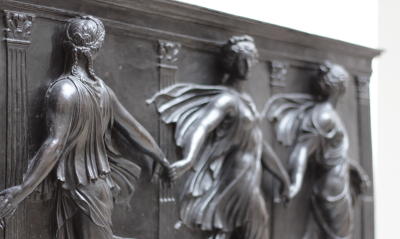
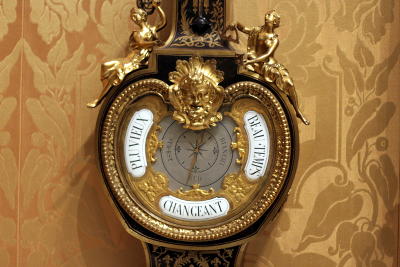
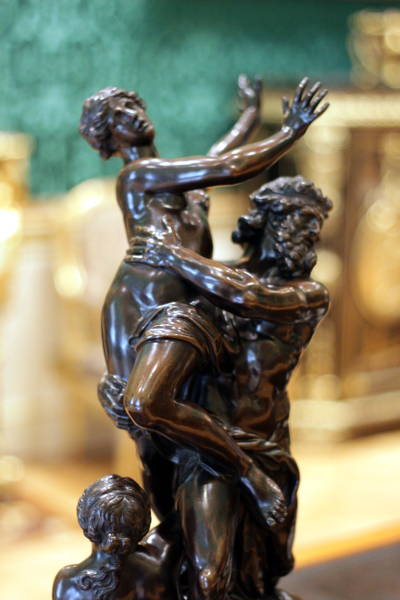
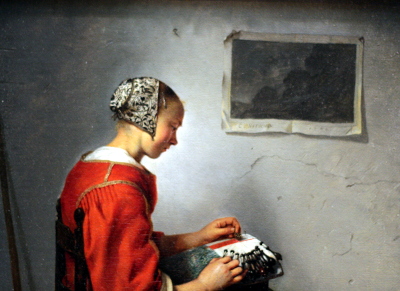
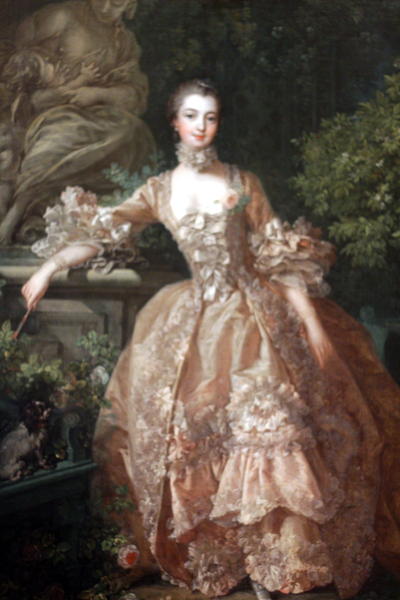
Matthew Paris, the great medieval chronicler did not think very highly of King John, the English King whose bad behaviour was the catalyst for Magna Carta :
The new exhibition at The British Library, Magna Carta: Law, Liberty, Legacy takes us through the various ways John was a bad King before following the legacy of this document over the years, from the English Civil War, to the American War of Independence and finally our own troubled times.
If you like medieval manuscripts, the first two rooms are worth waiting for. The actual documents themselves are hard to decipher, impossible if you don't know your latin, but being so close to them is much better than any digital reproduction. On top of the language difficulties however, the writing is often tiny. They must have had good eye sight in the 13th Century.
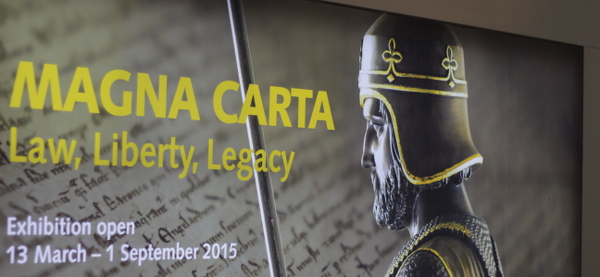
If you want a short introduction to Magna Carta and its history, the British Library has a good introduction. The "Great Charter" is not unique, and was not the first such document between a monarch and his subjects, but its fame rests on the way it was held up and used in the centuries afterwards. It was important in the transition from the "Kings Law" to the "Common Law", codifying some of the things we take for granted today, such as trial by a jury of peers and no arbitary detention.
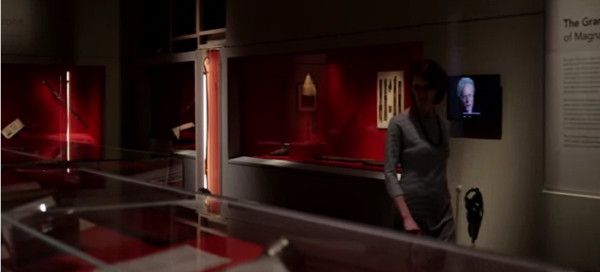
Magna Carta is still a rallying cry, and that's a good thing.
Speaking of Goya, this is one of my favourite paintings.
Doña Isabel de Porcel
before 1805, Francisco de Goya
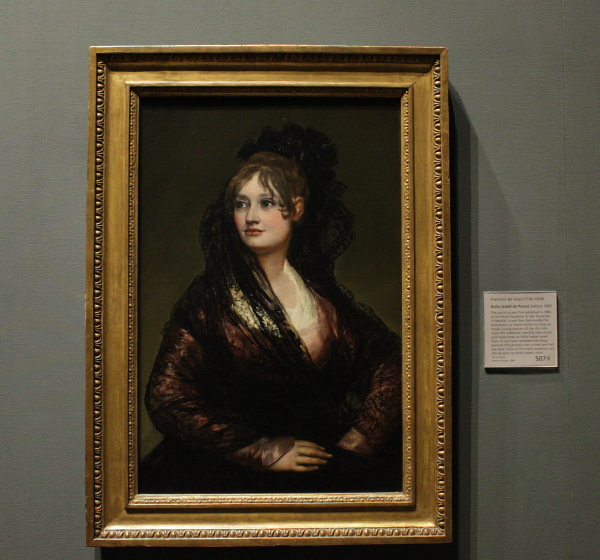
A long time ago, when I first tried my hand at painting in oils, I think I tried to copy this picture. A moment of hubris. I gave up my oil painting attempts quite quickly in fact, and the copy wasn't great as far as I remember. I love the Goya painting though, even though the subject matter is fairly routine in portraiture. There's a vibrancy about her I think and she looks alive.
More about the painting here.
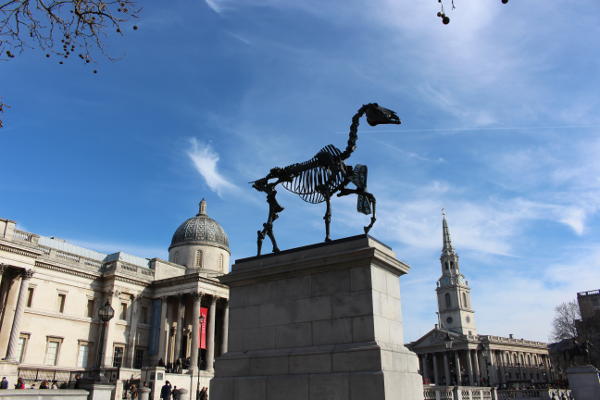
London's still toying with the idea of fixing the Fourth Plinth. For a long time, it's been a blue cockerel and now it's a skeletal horse. I have to say that I missed the :
... implied critique of the relationships between power, money, art, privilege and history
I quite like the new plinth for a change.
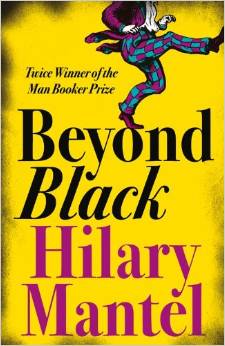
Beyond Black
by Hilary Mantel
True to its title, this is a dark book, but also very funny. But as well as containing well observed comment, great characters and a look at the often mundane nature of life, even for those on the "psychic circuit", there's a lot to unsettle. A ghost story should have a bit of a bite. It's also another beautifully written Mantel novel.
The two main characters are Alison, a psychic, with more than just body problems (she's very large) and her "assistant" Colette, sharp, cold and known as "the monster" at school. Alison Hart had a very murky and extremely painful and brutal childhood, something recollected in snatches throughout the book. A bad past that haunts her present in a literal way, and seems to be getting worse. People can be kind, nasty, maudlin and very cruel. Even when dead.
Very funny, but also very painful to read sometimes. A good book and highly recommended.
Goya, at The Courtauld
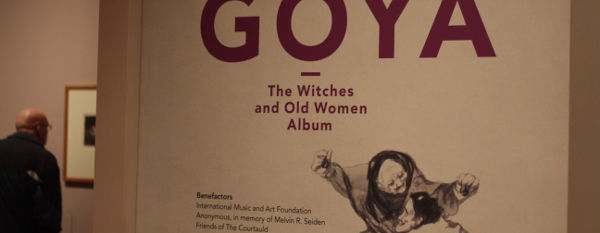
This small, two room exhibition of Francisco Goya drawings shows his fantastical side. Dozens of small pencil and ink drawings (and some lithographs) are brought together at The Courtauld under the title : The Witches and Old Women Album.
Done for his own amusement, no commissions here, they are uniquely "Goya". Perhaps his most famous drawing in this vein is El sueño de la razón produce monstruos :
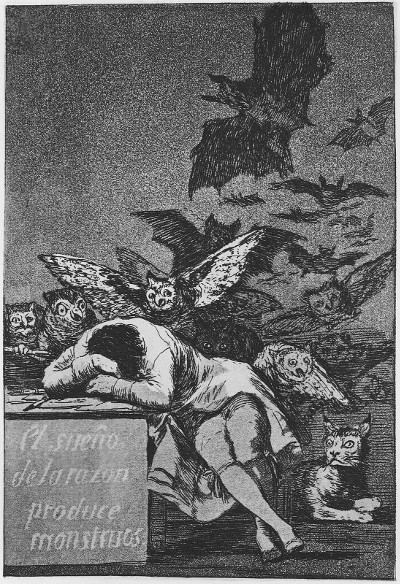
This picture has been much discussed and analysed, with it usually considered as meaning that the absence of reason results in bad things happening. I recently came across a contrary view however, by "Spengler" (David Goldman), a conservative, Jewish commentator, who writes :
Francisco Goya's 1799 etching "El sueño de la razón produce monstruos" usually is mistranslated as “the sleep of reason produces monsters.” The word sueño typically (and clearly in this context) means "dream." The mistranslation implies that monsters emerge when reason ceases to be vigilant; what Goya meant, rather, is that "monsters are what reason dreams about."
This is an anti-enlightenment, anti-revolutionary viewpoint, in opposition to the often anti-religious currency common today, and born of the French Revolution. Without Goya around to tell us, it is difficult to know what he meant for certain. However, as human beings, we know that we can produce monsters whether we are reasonable or not (as John Gray would point out).
The drawings on display in this exhibition are of a similar, nightmarish vein. An obsession with age, death and horror. Some quite grotesque, many odd. Quite a strange artist.
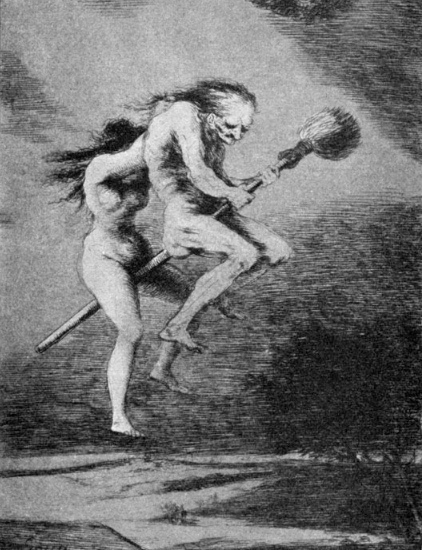
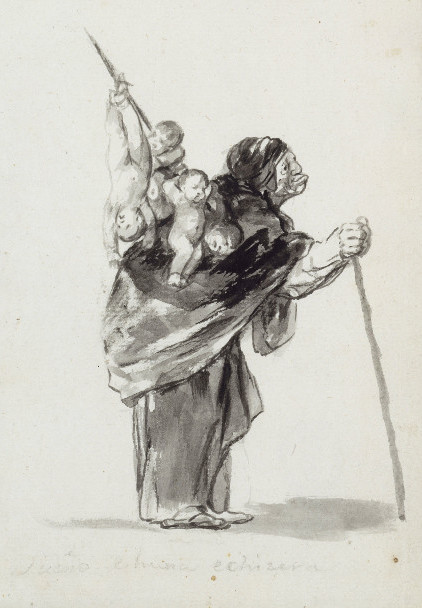
This is a photograph of John Singer Sargent in his studio in Paris :
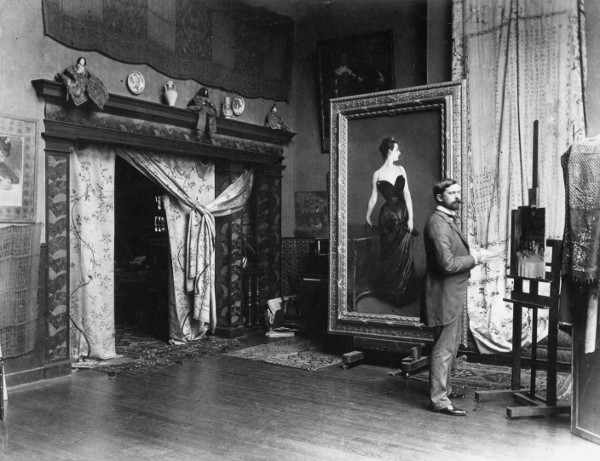
The year is 1884.
If you visit the Artfund website, the photograph has "hot spots" overlaid on top. If you hover over the picture, you can click a "hot spot" and read something about things you can see e.g. the Japanese dolls on the shelf above the fireplace. See them?
The large painting behind him became notorious and the cause (partly at least) of him leaving Paris for London. This painting is called Madame X :
Sargent’s famously controversial painting.
Read why, and more, at the Artfund site.
The John Singer Sargent exhibition at the National Portait Gallery is very good. So good, I suspect I'll visit again, like I did with the recent Rembrandt show.
On the right, detail from Portraits of M.E.P et De Mlle L.P,, oil on canvas, 1881.
Sargent, an American expat born in Italy, mostly worked in Europe and moved in the highest society circles. He's most well known for his portraits of high society, but also incuding other artists (including Rodin and Monet), writers, poets and actors. Very prolific, he is truly a master painter, very gifted. Beautiful and awe-inspiring work.
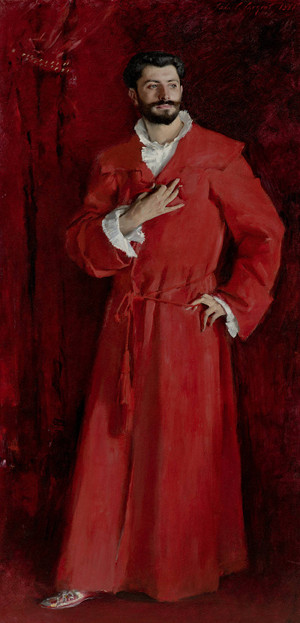
On the right, Dr. Pozzi at Home, oil on canvas, 1881.
Samuel Jean Pozzi was a famous Parisian gynecologist, and bit of a dandy, although a skilled surgeon. From wikipedia :
Sargent depicts him in his dressing gown but looking very much like a Cardinal of the church. The painting is large, a life size person and towers over you.
_-_Self-Portrait_1907_b.jpg)
One of his most famous paintings is Carnation, Lily, Lily, Rose, which usually hangs at the Tate.
A beautiful painting and one of the Tate's most popular :
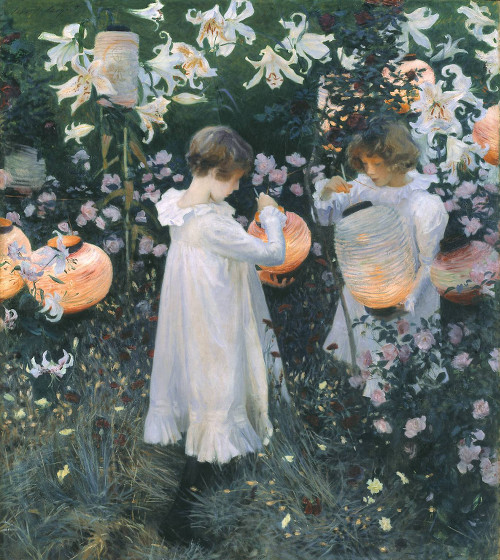
Carnation, Lily, Lily, Rose, oil on canvas, 1885-6
Last time I was at the Tate, it wasn't hanging (due to the Sargent show preparations probably) and a little girl visiting with her father was very disappointed.
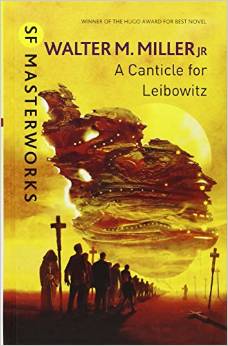
By Walter M. Miller
Miller saw war and the dawn of the nuclear age first hand. He signed up to the US Army at the start of the Second World War and took part in bombing missions over Europe, as a tail gunner. Perhaps his role in the destruction of the famous Benedictine monastery at Monte Cassino played a part in the genesis of his great novel A Canticle for Leibowitz. The bombs that exploded over Japan made the threat of a nuclear armageddon clear.
I've known of this book and how highly it was regarded for a long time. Having finally got round to reading it, It's not what I expected, but much better for that. It deserves its "masterwork" label and its awards.
The monks of the Albertian Order of Leibowitz safeguard and transmit knowledge down the ages like the Medieval monks of the past for us. Not always aware of the meaning of the artifacts in their care, they understand how important it is to keep the flame of knowledge burning, so one day humankind can rebuild the world after the cataclysm of nuclear war (the so-called "Flame Deluge").
The novel is in three parts, each separated by (possibly) hundreds of years as the monks see the world slowly start rebuilding and growing, coming to resemble the world of before finally. Each age shows many changes over the previous but the question at hand is how changed are we?
Miller is good describing the tension between science and religion and it's refreshing to see that both seem to be given a decent hearing. The play of politics, war and human aggrandizement make very uncomfortable bed-fellows with reason and science here though. Miller's religious conviction seems quite clear but not overbearing and his philosophical debate is fascinating and ell written. The latin passages interjected throughout even had me browsing a "Teach Yourself Latin" text book at one point. Such is the life of the church.
Latin is not required to love the book. Moving and poignant, and very memorable.
This is my version of a Will Kemp Silver Goblet, painted from following a tutorial video.
Silver Goblet
Acrylic on board, 2015.
It is also the first painting of 2015 and I'm fairly happy with the way it turned out. Considering I didn't like it at all until very late in the process, a good result. It also proves, once again, you really need a bit of faith to keep going and see things through sometimes.
I painted this on a wooden MDF board, an Ampersand Artist Panel Smooth Primed from Jackson's Art. A very different surface to what I'm used to: very smooth, almost like formica, even with two layers of coloured ground. The paint moved around a bit more than expected, and my rough, spiky no. 6 filbert brush definitely left brushmarks!
I'll use the board again, but perhaps try a canvas textured version. I'm finding it harder to sit down, and sit still, this year so far. Having said that, I still hope to overcome the January deflation and start something new: either another Kemp tutorial, or perhaps something of my own for a change.
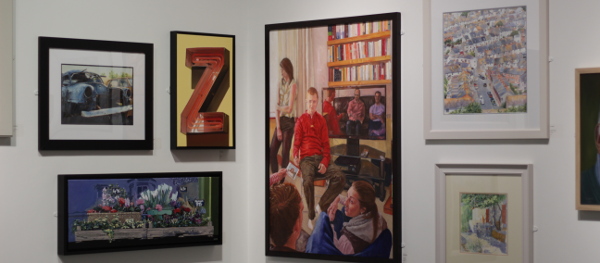
The Mall Galleries have a show :
A good introduction to the show is at the magazine's web site, including a look at the various prize winners.
The winner of the "Readers Choice" award was David Miller :
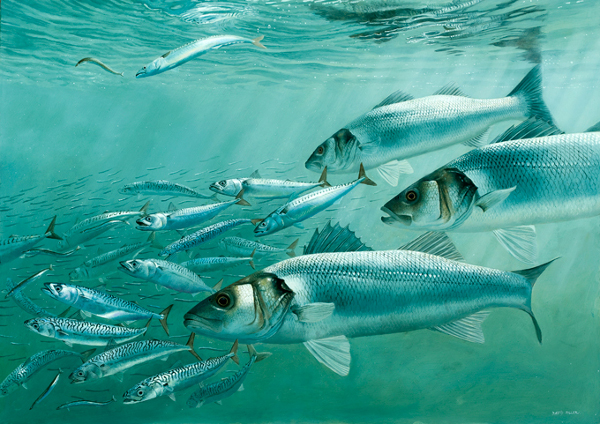
David Miller, Bass, Mackerel and Sand-eels, oil
Good painting and some excellent pictures elsewhere in the show. I particularly like exhibitions like this with a lot of different artists on display.

My laptop of choice has always been a Thinkpad, firstly as made by IBM and latterly by Lenovo. I own an X220 (and an older X60s, still a wonderful little machine), and even though it's a few years old now it's still a great laptop.
One of the big reasons I'd still buy a Thinkpad is their build quality. Also, if you need to do any maintenance on the system (e.g. upgrade RAM, swap the mSATA SSD), the documentation is very good (much better than Dell's for instance).
People often enthuse about the build quality of Apple laptops, but I'm not willing to spend money with Apple. And even if I was, it doesn't seem such a good idea to replace Mac OSX with Linux. Linux generally runs very well on the Thinkpad.
Currently with Debian "Jessie" (Testing) installed and the i3 tiling window manager. It's very refreshing not having all the desktop clutter around. Not really any desktop at all in fact.
In Search of the Dark Ages
by Michael Wood
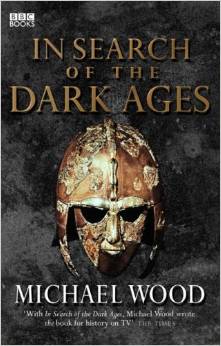
As usual, Michael Wood is a very worthwhile historian and broadcaster and this book is a good read.
Consisting of a series of essays on pivotal episodes in Dark Age Britain, covering Boudicca, Offa, Alfred and a few others of note, it is not a full or linear history but offers a great introduction to the changing face of Britain between AD 400 and the Domesday Book. I have not seen the original BBC series but it appears to be on Youtube (what would we do without it) so I hope to watch the television programs too (even though the VHS video quality leaves a little to be desired). The book and the series covers Arthur as well, minus all the mythology (little is left actually).
I would recommend everything he's done, including his recent BBC series King Alfred and the Anglo-Saxons and his essay as part of the Anglo-Saxon Portraits programs (on Penda, King of Mercia, who had quite an unfortunate end, but somehow fitting: his head was cut off and spiked).
A few exhibits from the British Museum's early Britain and Europe rooms are listed as having been found via a metal detectorist. In the news today was a story about a new find by a metal "detectorist" of over 5000 Anglo-Saxon coins in a field in Buckinghamshire. It's quite a dream to dig up buried treasure.
One of the most beautiful examples of this was dug up from a field in Norfolk in the late 1950's: the Great Torc shown below :
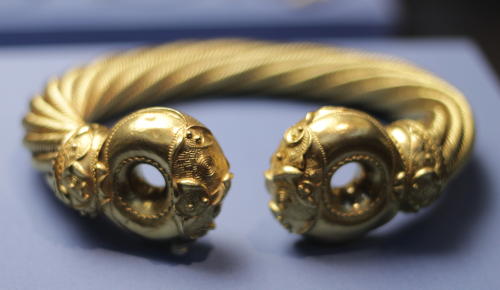
A torc is a piece of jewellery or decoration worn round the neck and the beauty and complexity of this one is staggering considering it was made sometime in the early first century BC.
The torc is made from just over a kilogram of gold mixed with silver. It is made from sixty-four threads. Each thread was 1.9 mm wide. Eight threads were twisted together at a time to make 8 separate ropes of metal. These were then twisted around each other to make the final torc. The ends of the torc were cast in moulds. The hollow ends were then welded onto the ropes.
This is a wonderful example of Celtic design from the British Isles.
In the same room at the museum we find this :
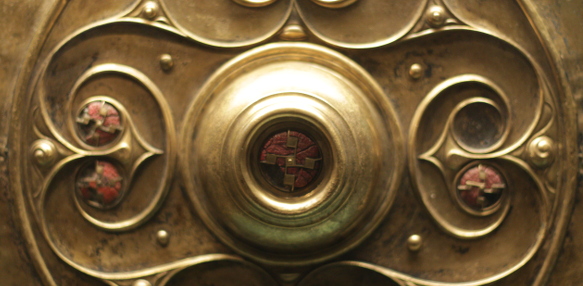
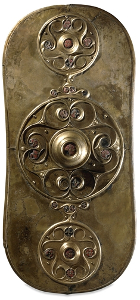
Above is a detail from the Battersea Shield, found in the River Thames in 1857. It has no battle damage and is thought to be more ceremonial than martial, perhaps thrown into the water as a votive offering (iron-age people, including the Celtic-type, had a strong relationship with cross-roads and waterways). No one really knows the reason for it being found here.
Going even further back, we have the Folkton Drums, one of which is shown below.
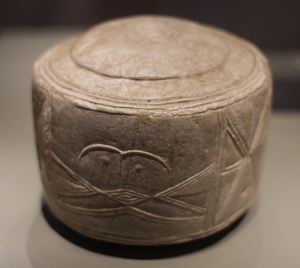
These are neolithic (dated between 2600-2000 BC) and found on Folkton Wold in 1889. It is not clear what they are but they have been carved into geometric shapes and buried with a child.
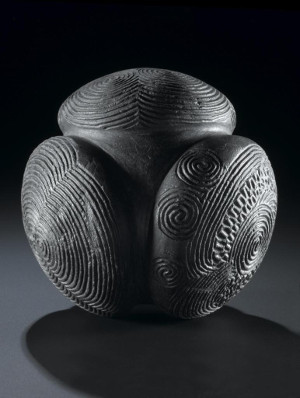
The Folkton Drums are apparently unique, but remind me a little of the carved stone balls found in Scotland, also dated to roughly 2500 BC. See more of these at the National Museum of Scotland.
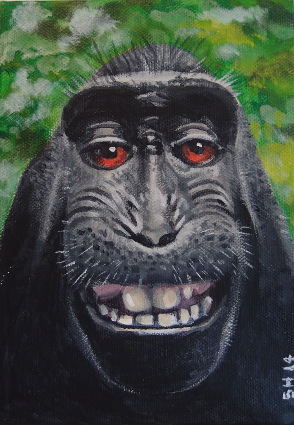
2014 was not so bad for me generally. Here's to 2015 being a good year here and also for you, your family and everyone you care about. Happy new year!
The picture's a painting I made a few months ago of the famous Monkey Selfie. I didn't show off the picture because I thought it would make a good Christmas present for my 8 year old niece (hence no publicity!). I'd glad to say it was liked! It's just a small painting and almost unplanned, but it's my favourite and the one I'm happiest with so far!




